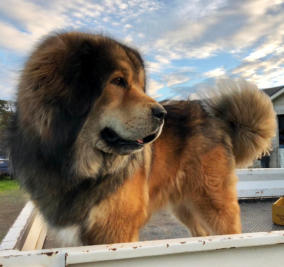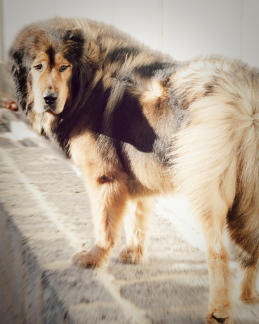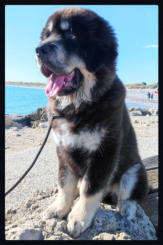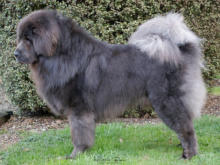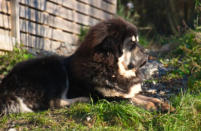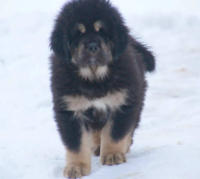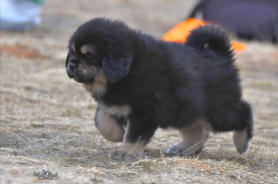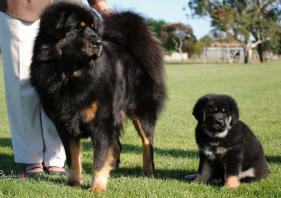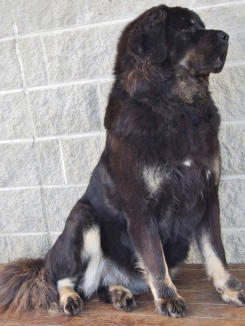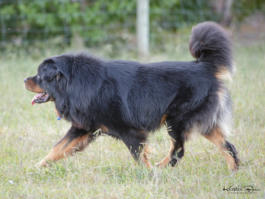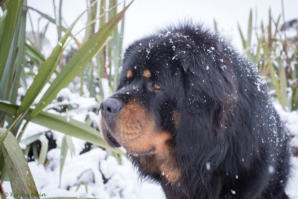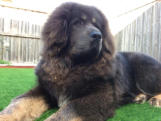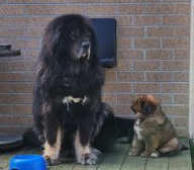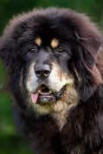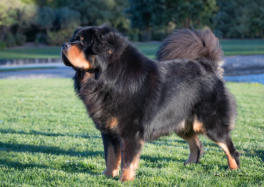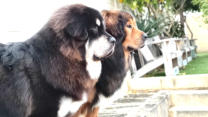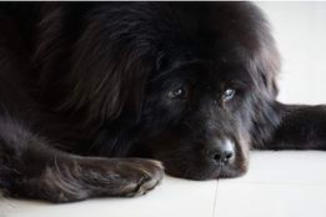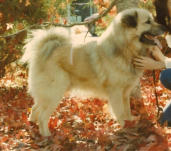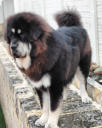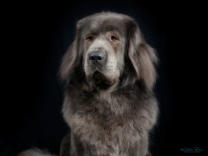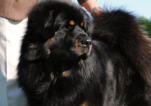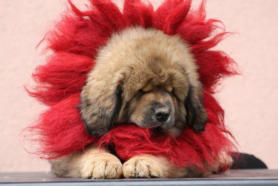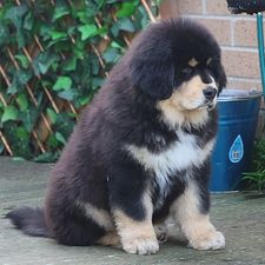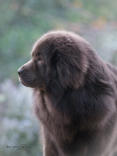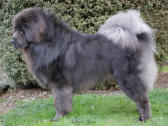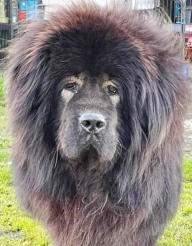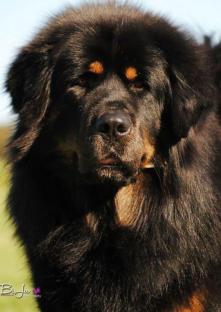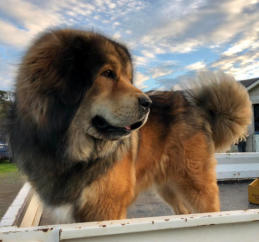




© TIBETAN MASTIFF 2024

Welcome
Welcome to Tibetan Mastiff Australia/New Zealand! Our mission is to protect and preserve the original Tibetan Mastiff, a breed with deep historical roots and unique characteristics. About the Tibetan Mastiff Origin and History: Tibetan Mastiffs are an ancient and primitive breed, originating from the plateaus of Tibet and the surrounding Himalayan regions. Bred by Tibetan nomads for centuries, these dogs served as spiritual, instinctive guardians. They were used to protect livestock, villages, and the great monasteries of Tibet. It is even believed that Tibetan Mastiffs were considered reincarnations of monks, highlighting their revered status in Tibetan culture. Characteristics: Tibetan Mastiffs are known for their devotion to their family and property. They possess a magnificent appearance, intelligence, and a strong, independent personality. Their growing popularity on social media has unfortunately led to some mistreatment and exploitation, with variants like the Chinese Mastiff being marketed by mixing them with other breeds for a specific look. Our Commitment At Tibetan Mastiff Australia and New Zealand, we are dedicated to: • Protecting the Original Breed: We focus on preserving the traditional Tibetan Mastiff and promoting ethical breeding practices. • Promoting Responsible Ownership: We aim to ensure that Tibetan Mastiffs are treated with the respect they deserve, maintaining their health and happiness. • Educating Owners: We provide resources and support to help potential and current owners understand proper care and maintenance of Tibetan Mastiffs. • Sharing Experiences: Our platform allows owners to share their stories and connect with like-minded individuals who appreciate this incredible breed. Explore Our Resources • History and Characteristics: Learn about the rich history and unique traits of Tibetan Mastiffs. • Photo Gallery: View stunning images showcasing these majestic dogs in their natural splendour. • Stories and Accounts: Read about famous Tibetan Mastiffs and personal accounts from other owners. • Expert Advice: Access a wealth of information compiled by our team of experts to gain a deeper understanding of the breed. We invite you to explore our website and join us in supporting the Tibetan Mastiff. If you have any questions or would like to share your experiences, please feel free to reach out. We look forward to connecting with you and sharing our passion for this extraordinary breed.






The beginnings of the Tibetan
Mastiff in Australia 1983




The
story
of
the
Leeton
family's
introduction
of
Tibetan
Mastiffs
into
Australia
is
a
fascinating
one.
In
the
early
1980s,
the
Leeton
family,
driven
by
a
deep
love
for
the
breed,
began
their
journey
with
Tibetan
Mastiffs.
This
breed,
known
for
its
ancient
origins
and
impressive
stature,
was
relatively
unknown in Australia at the time.
Cheryl
Leeton,
a
key
figure
in
this
story,
played
a
significant
role
in
establishing
and
nurturing
the
breed
in
Australia.
Her
dedication
to
preserving
the
breed's traditional characteristics and ensuring their
well-being
has
been
central
to
their
continued
success.
Through
careful
breeding
practices
and
a
commitment
to
the
breed's
heritage,
the
Leetons
have
contributed
significantly
to
the
Tibetan
Mastiff's
presence
and
reputation
in
Australia.
Their
efforts
have
helped
maintain
the
breed’s
true
type,
ensuring
that
future
generations
can
appreciate
these majestic dogs in their most authentic form.
The
Leetons'
story
is
a
testament
to
their
passion
and
dedication,
showcasing
how
a
family's
love
for
a
breed
can
have
a
lasting
impact
on
its
development
and preservation across continents.
Preservation Breeders of Tibetan Mastiffs
Preservation
breeders
of
Tibetan
Mastiffs
are
dedicated
individuals
who
play
a
crucial
role
in
maintaining
the
breed's
integrity
and
unique
characteristics.
These
breeders
are
deeply
committed
to
protecting
the
breed's
traditional
bloodlines
and
ensuring
that
each
generation
reflects the best attributes of the Tibetan Mastiff.
Key Aspects of Preservation Breeding
Thoughtful
Breeding
Programs:
Responsible
breeding
programs
for
Tibetan
Mastiffs
are
developed
slowly
and
carefully.
These
programs
evolve
over
many
years,
focusing
on
maintaining
the
breed’s
traditional
traits
and
improving
the
health and temperament of the dogs.
Global
Efforts:
Many
preservation
breeders
travel
extensively,
with
some
even
making
pilgrimages
to
Tibet,
the
breed's
country
of
origin.
This
ensures
that
imported
dogs
have
solid
pedigrees
and
represent the highest quality of the breed.
Pedigree
and
Documentation:
Maintaining
complete
and
generational
pedigrees
is
essential
for
responsible
breeders.
These
records,
along
with
documented
registrations,
help
ensure
the
purity
of
the
bloodlines.
Breeders
often
trace
lineage
back
to
specific
founding
dogs,
ensuring
a
clear
and
accurate history.
Temperament
and
Appearance:
The
Tibetan
Mastiff
is
known
for
its
primitive
character,
which
can
be
challenging
to
blend
with
traits
from
more
domesticated
breeds.
While
some
breeding
might
result
in
dogs
that
look
like
Great
Pyrenees
but
retain
a
Tibetan
Mastiff
temperament,
others
may
look
and
act
like
Tibetan
Mastiffs.
This
variability
highlights
the
complexities
of
genetics
and
the
challenges of preserving specific traits.
Commitment
to
Puppies:
Many
preservation
breeders
produce
only
one
or
two
litters
per
year,
dedicating
significant
time
to
supporting
new
owners.
They
provide
guidance
on
the
breed’s
characteristics,
including
territorial
and
dominance
issues.
Responsible
breeders
often
have
lifetime
support
agreements
and
may
include
contractual
terms
requiring
the
return
and
re-homing
of
dogs
if
necessary.
Lifetime
Support:
Ethical
breeders
stand
behind
their
dogs
for
their
entire
lives.
This
ongoing
support
helps
prevent
the
abandonment
of
Tibetan
Mastiff
mixes
in
shelters,
a
common
issue
with
less
committed or occasional breeders.
Overall,
preservation
breeders
are
crucial
in
ensuring
that
the
Tibetan
Mastiff
continues
to
thrive
in
its
most
authentic
form,
reflecting
both
its
historical roots and its modern-day qualities.



BONO -TEMZIN
Powered By Tibetan Mastiff owners of AU/NZ 2024











Welcome
Welcome to Tibetan Mastiff Australia/New Zealand! Our mission is to protect and preserve the original Tibetan Mastiff, a breed with deep historical roots and unique characteristics. About the Tibetan Mastiff Origin and History: Tibetan Mastiffs are an ancient and primitive breed, originating from the plateaus of Tibet and the surrounding Himalayan regions. Bred by Tibetan nomads for centuries, these dogs served as spiritual, instinctive guardians. They were used to protect livestock, villages, and the great monasteries of Tibet. It is even believed that Tibetan Mastiffs were considered reincarnations of monks, highlighting their revered status in Tibetan culture. Characteristics: Tibetan Mastiffs are known for their devotion to their family and property. They possess a magnificent appearance, intelligence, and a strong, independent personality. Their growing popularity on social media has unfortunately led to some mistreatment and exploitation, with variants like the Chinese Mastiff being marketed by mixing them with other breeds for a specific look. Our Commitment At Tibetan Mastiff Australia and New Zealand, we are dedicated to: • Protecting the Original Breed: We focus on preserving the traditional Tibetan Mastiff and promoting ethical breeding practices. • Promoting Responsible Ownership: We aim to ensure that Tibetan Mastiffs are treated with the respect they deserve, maintaining their health and happiness. • Educating Owners: We provide resources and support to help potential and current owners understand proper care and maintenance of Tibetan Mastiffs. • Sharing Experiences: Our platform allows owners to share their stories and connect with like-minded individuals who appreciate this incredible breed. Explore Our Resources • History and Characteristics: Learn about the rich history and unique traits of Tibetan Mastiffs. • Photo Gallery: View stunning images showcasing these majestic dogs in their natural splendour. • Stories and Accounts: Read about famous Tibetan Mastiffs and personal accounts from other owners. • Expert Advice: Access a wealth of information compiled by our team of experts to gain a deeper understanding of the breed. We invite you to explore our website and join us in supporting the Tibetan Mastiff. If you have any questions or would like to share your experiences, please feel free to reach out. We look forward to connecting with you and sharing our passion for this extraordinary breed.
© TIBETAN MASTIFF 2024






Preservation Breeders of Tibetan
Mastiffs
Preservation breeders of Tibetan Mastiffs are dedicated individuals who play a crucial role in maintaining the breed's integrity and unique characteristics. These breeders are deeply committed to protecting the breed's traditional bloodlines and ensuring that each generation reflects the best attributes of the Tibetan Mastiff. Key Aspects of Preservation Breeding Thoughtful Breeding Programs: Responsible breeding programs for Tibetan Mastiffs are developed slowly and carefully. These programs evolve over many years, focusing on maintaining the breed’s traditional traits and improving the health and temperament of the dogs. Global Efforts: Many preservation breeders travel extensively, with some even making pilgrimages to Tibet, the breed's country of origin. This ensures that imported dogs have solid pedigrees and represent the highest quality of the breed. Pedigree and Documentation: Maintaining complete and generational pedigrees is essential for responsible breeders. These records, along with documented registrations, help ensure the purity of the bloodlines. Breeders often trace lineage back to specific founding dogs, ensuring a clear and accurate history. Temperament and Appearance: The Tibetan Mastiff is known for its primitive character, which can be challenging to blend with traits from more domesticated breeds. While some breeding might result in dogs that look like Great Pyrenees but retain a Tibetan Mastiff temperament, others may look and act like Tibetan Mastiffs. This variability highlights the complexities of genetics and the challenges of preserving specific traits. Commitment to Puppies: Many preservation breeders produce only one or two litters per year, dedicating significant time to supporting new owners. They provide guidance on the breed’s characteristics, including territorial and dominance issues. Responsible breeders often have lifetime support agreements and may include contractual terms requiring the return and re-homing of dogs if necessary. Lifetime Support: Ethical breeders stand behind their dogs for their entire lives. This ongoing support helps prevent the abandonment of Tibetan Mastiff mixes in shelters, a common issue with less committed or occasional breeders. Overall, preservation breeders are crucial in ensuring that the Tibetan Mastiff continues to thrive in its most authentic form, reflecting both its historical roots and its modern-day qualities.
The beginnings of the Tibetan
Mastiff in Australia 1983







BONO -TEMZIN



Powered By Tibetan Mastiff
owners of AU/NZ 2024

The story of the Leeton family's introduction
of Tibetan Mastiffs into Australia is a
fascinating one. In the early 1980s, the
Leeton
family, driven by a deep love for the breed,
began their journey with Tibetan Mastiffs.
This breed, known for its ancient origins and
impressive stature, was relatively unknown
in Australia at the time. Cheryl Leeton, a key
figure in this story, played a significant role
in establishing and nurturing the breed in
Australia. Her dedication to preserving the
breed's traditional characteristics and
ensuring their well-being has been central to
their continued success. Through careful
breeding practices and a commitment to the
breed's heritage, the Leetons have
contributed significantly to the Tibetan
Mastiff's presence and reputation in
Australia. Their efforts have helped maintain
the breed’s true type, ensuring that future
generations can appreciate these majestic
dogs in their most authentic form.
The Leetons' story is a testament to their
passion and dedication, showcasing how a
family's love for a breed can have a lasting
impact on its development and preservation
across continents.



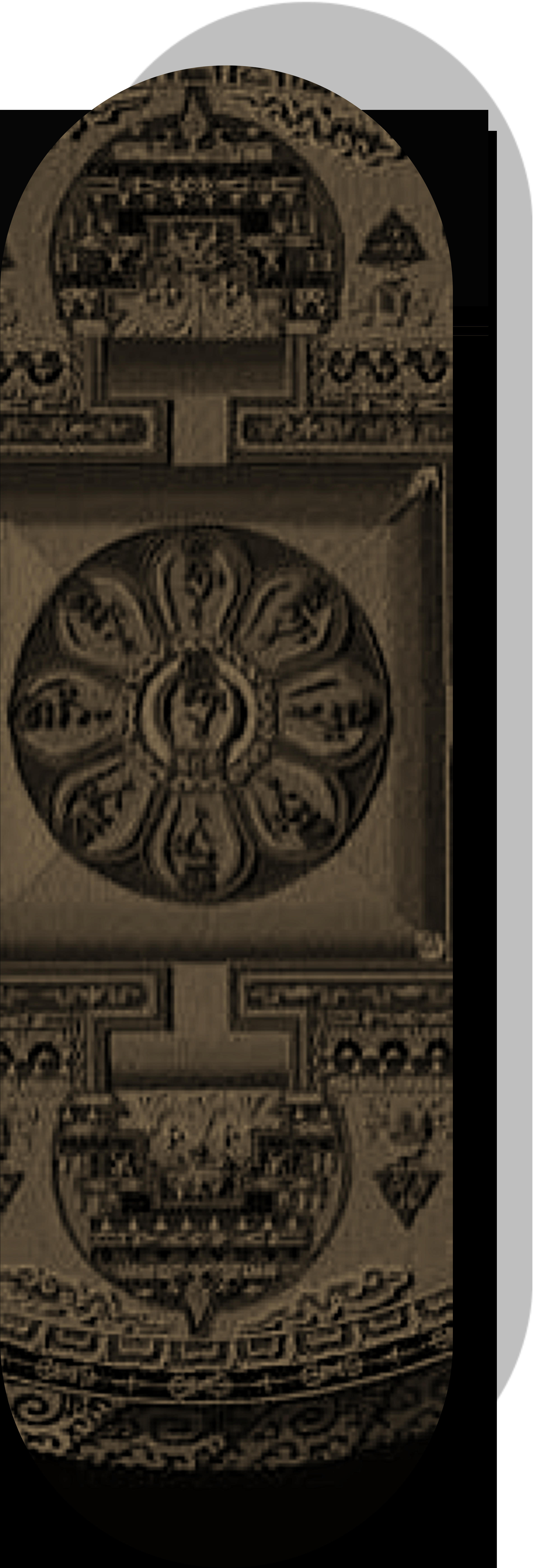



© TIBETAN MASTIFF 2024

About
Tibetan Mastiff
Recent studies have provided fascinating insights into the Tibetan Mastiff's adaptation to the extreme climates of its native high-altitude regions. It turns out that these remarkable dogs have developed their impressive resilience through interbreeding with local mountain wolves. This genetic blending contributed significantly to their ability to endure the harsh and frigid conditions of the Himalayas. The Tibetan Mastiff's origins trace back more than twenty thousand years to the rugged and isolated regions of Tibet. Historically, these powerful dogs were revered as formidable protectors, tasked with safeguarding Buddhist monasteries from dangerous wildlife such as snow leopards and wolves. Their role as guardians required not only physical strength but also an exceptional level of courage and vigilance. The Tibetan Mastiff's personality is as striking as its physical appearance. These dogs are renowned for their remarkable intelligence, which manifests in their ability to learn quickly and solve problems. Their loyalty to their family is profound, and they form extraordinarily strong bonds with their owners, making them both dependable companions and effective protectors. Despite their imposing size and powerful build, Tibetan Mastiffs possess a calm and independent demeanour. They are not overly demanding of attention but require regular exercise and social interaction to maintain their well-being. This breed’s inherent courage and strong guarding instincts make them excellent watchdogs, capable of deterring intruders and protecting their home. However, their formidable nature means that consistent training and early socialization are crucial to ensuring they develop into well-adjusted and obedient pets. Visually, Tibetan Mastiffs are a sight to behold. Their dense, double-layered coat, which comes in a variety of striking colours such as rich black, slate grey, and golden, adds to their majestic and imposing appearance. The thick undercoat provides insulation against cold temperatures, while the longer outer coat repels moisture and protects them from the elements. This luxurious fur not only enhances their regal presence but also underscores their historical role as resilient protectors in some of the world's most challenging environments. On our site, you will find a comprehensive array of resources dedicated to the Tibetan Mastiff. We offer a rich collection of photos and articles that delve into various aspects of this extraordinary breed. Whether you are a current owner, a prospective buyer, or simply an enthusiast, our site aims to provide valuable information and foster a community of like-minded individuals. We invite you to join our online community, where you can share your experiences, seek advice, and participate in engaging discussions about all things related to Tibetan Mastiffs. We hope you find our resources informative and enjoyable, and we look forward to welcoming you to our vibrant and supportive community.






Diversity by Sanna Sander
Courtesy of Sanna Sander, Sweden - zodd.se
The Many Faces of the Tibetan Mastiff
When you first get in contact with the TM you soon notice that it consists of several different types. A novice in the dog world would have trouble seeing that they all belong to the same breed and it can be a bit confusing before you understand that things are as they have always been. Diversity is something that follows the TM through the centuries. This is a breed hailing from the vast region of the Himalayas. The people of this region have used their dogs for many tasks and demanded dogs capable of performing the work at hand. It is not strange that different types would evolve to better suit the life and hardship in different areas.
We
have
the
smaller
and
lighter
TM
that
watched
over
herds
on
the
slopes
and
plains.
We
have
the
heavier
and
larger
TM
said
to
guard
monasteries
and
monks.
We
have
different
types
from
different
areas
of
Tibet
-
smooth
coated
ones
and
long
haired
ones.
They
have
all
adjusted
to
the
life
around
them
and
have
been
shaped
into
the
dogs
we
see
today.
It
was
the
ones
with
power
in
their
bark,
the
brave
ones,
the
clever
ones
that
carried on the legacy.
There
was
a
need
for
agile
and
strong
dogs
who
could
guard
the
livestock
and
protect
them
from
foes
and
there
was
a
need
for
impressive
gatekeepers
at
the
monasteries,
holding
intruders
at
bay
with
their
deep
voices
and
fierce
look.
The
dogs
had
more
roles
to
play
than
these
two,
they
were
used
in
many
ways
and
adjusted to the conditions of life.

When
these
dogs
came
to
the
west
they
were
all
called
by
their
new
name:
Tibetan
Mastiff.
People
thought
of
them
as
one
breed
and
being
used
to
the
breeds
in
the
west
they
had
a
very
clear
image
of
what
a
breed
is
-
dogs
who
are
all
similar
in
type,
temperament
and
looks.
The
TM
does
not
quite
fit
that
description.
They
all
have
similarities
but
are
they
really
just
one
breed?
The
question is a hot topic in the TM world.

In
the
west
we
used
to
separate
the
breed
into
two
types.
This
has
never
been
official
in
any
way,
but
to
people in the breed these terms are well known:

To
me
this
is
a
very
interesting
topic
and
I
am
amazed
at
the
feelings
that
this
subject
brings
out
in
breeders
and
owners.
It
is
very
sad
to
hear
negative
things
about
the
different
types
since
they
are
all
gathered
under
one
name.
I
think
it's
strange
that
all
these
different
dogs
have
been
pushed
into
one
form
but
at
the
same
time
I
am
in
love
with
the
diversity
of
our
beautiful
breed.
They
are
all
very
special,
no
matter
if
they
are
big,
small,
heavy, light, long haired, smooth, golden, black or blue!


CHINESE
MASTIFF
is
NOT
a
type
within
the
TIBETAN
MASTIFF breed
In recent years a completely new "variation" of Tibetan mastiff emerged with its origin in China. To dedicated fanciers of Tibetan mastiff it's known as CHINESE MASTIFF, but also goes under the names MARKET TYPE Tibetan mastiff, Pig mastiff, Chinese Tibetan Mastiff. These dogs are NOT Tibetan mastiffs, and they certainly is NOT a type within the breed, no matter what the breed name on their pedigree may say. They are a modern creation, made in China at the beginning of our century and consists of a lot of different breeds. All used to add size, coat and bone to the breed. It have since spread across the rest of the world. These dogs are not to be considered Tibetan Mastiffs because they are simply cross- breeds with pedigrees, sadly being used as studs all over the world. The dogs on the right are typical examples of Chinese mastiffs - exaggerated in every way. The Tibetan mastiff was never a breed of exaggerations, it's a breed of moderation. Their past as functional working dogs have dictated their evolution unlike the Chinese mastiff who was created to saturate a huge demand when the Tibetan mastiff ended up in the spotlight at the beginning of this century. It was a sign of wealth, status and prosperity to own a Tibetan mastiff in China, and simplified the birth of the Chinese mastiff was a result of demand and supply, and of course the result of backyard breeders seeing an opportunity to cash in on the hype. Make no mistake, it was a hype! No one in the breed have missed the headlines about "the world's most expensive breed". A lot of these Chinese mastiffs were sold to the west and breeders here were thrilled to add new blood to the small gene pool, but sadly did so without asking questions, like for example "how come this type has never been seen before?". Nowadays it can be a challenge to actually find a Tibetan mastiff without Chinese mastiff blood, bred in the west.
Fu-Hsing Sundari"Zodd"
Sanna Sander
Ask (Manam Ask Drokpa)
Sanna Sander








Powered By Tibetan Mastiff owners of AU/NZ 2024





About
Tibetan Mastiff
Recent studies have provided fascinating insights into the Tibetan Mastiff's adaptation to the extreme climates of its native high-altitude regions. It turns out that these remarkable dogs have developed their impressive resilience through interbreeding with local mountain wolves. This genetic blending contributed significantly to their ability to endure the harsh and frigid conditions of the Himalayas. The Tibetan Mastiff's origins trace back more than twenty thousand years to the rugged and isolated regions of Tibet. Historically, these powerful dogs were revered as formidable protectors, tasked with safeguarding Buddhist monasteries from dangerous wildlife such as snow leopards and wolves. Their role as guardians required not only physical strength but also an exceptional level of courage and vigilance. The Tibetan Mastiff's personality is as striking as its physical appearance. These dogs are renowned for their remarkable intelligence, which manifests in their ability to learn quickly and solve problems. Their loyalty to their family is profound, and they form extraordinarily strong bonds with their owners, making them both dependable companions and effective protectors. Despite their imposing size and powerful build, Tibetan Mastiffs possess a calm and independent demeanour. They are not overly demanding of attention but require regular exercise and social interaction to maintain their well-being. This breed’s inherent courage and strong guarding instincts make them excellent watchdogs, capable of deterring intruders and protecting their home. However, their formidable nature means that consistent training and early socialization are crucial to ensuring they develop into well-adjusted and obedient pets. Visually, Tibetan Mastiffs are a sight to behold. Their dense, double-layered coat, which comes in a variety of striking colours such as rich black, slate grey, and golden, adds to their majestic and imposing appearance. The thick undercoat provides insulation against cold temperatures, while the longer outer coat repels moisture and protects them from the elements. This luxurious fur not only enhances their regal presence but also underscores their historical role as resilient protectors in some of the world's most challenging environments. On our site, you will find a comprehensive array of resources dedicated to the Tibetan Mastiff. We offer a rich collection of photos and articles that delve into various aspects of this extraordinary breed. Whether you are a current owner, a prospective buyer, or simply an enthusiast, our site aims to provide valuable information and foster a community of like-minded individuals. We invite you to join our online community, where you can share your experiences, seek advice, and participate in engaging discussions about all things related to Tibetan Mastiffs. We hope you find our resources informative and enjoyable, and we look forward to welcoming you to our vibrant and supportive community.




Diversity by Sanna
Sander
Courtesy of Sanna Sander,
Switzerland - zodd.se
The Many Faces of the
Tibetan Mastiff
When you first get in contact with the TM you soon notice that it consists of several different types. A novice in the dog world would have trouble seeing that they all belong to the same breed and it can be a bit confusing before you understand that things are as they have always been. Diversity is something that follows the TM through the centuries. This is a breed hailing from the vast region of the Himalayas. The people of this region have used their dogs for many tasks and demanded dogs capable of performing the work at hand. It is not unusual that different types would evolve to better suit the life and hardship in different areas.
We
have
the
smaller
and
lighter
TM
that
watched
over
herds
on
the
slopes
and
plains.
We
have
the
heavier
and
larger
TM
said
to
guard
monasteries
and
monks.
We
have
different
types
from
different
areas
of
Tibet
-
smooth
coated
ones
and
long
haired
ones.
They
have
all
adjusted
to
the
life
around
them
and
have
been
shaped
into
the
dogs
we
see
today.
It
was
the
ones
with
power
in
their
bark,
the
brave
ones,
the
clever
ones
that
carried on the legacy.
There
was
a
need
for
agile
and
strong
dogs
who
could
guard
the
livestock
and
protect
them
from
foes
and
there
was
a
need
for
impressive
gatekeepers
at
the
monasteries,
holding
intruders
at
bay
with
their
deep
voices
and
fierce
look.
The
dogs
had
more
roles
to
play
than
these
two,
they
were
used
in
many
ways
and
adjusted
to the conditions of life.


When
these
dogs
came
to
the
west
they
were
all
called
by
their
new
name:
Tibetan
Mastiff.
People
thought
of
them
as
one
breed
and
being
used
to
the
breeds
in
the
west
they
had
a
very
clear
image
of
what
a
breed
is
-
dogs
who
are
all
similar
in
type,
temperament
and
looks.
The
TM
does
not
quite
fit
that
description.
They
all
have
similarities
but
are
they
really
just
one
breed?
The
question
is
a
hot
topic
in
the
TM
world.
In
the
west
we
used
to
separate
the
breed
into
two
types.
This
has
never
been
official
in
any
way,
but
to
people
in
the
breed these terms are well known:


To
me
this
is
a
very
interesting
topic
and
I
am
amazed
at
the
feelings
that
this
subject
brings
out
in
breeders
and
owners.
It
is
very
sad
to
hear
negative
things
about
the
different
types
since
they
are
all
gathered
under
one
name.
I
think
it's
strange
that
all
these
different
dogs
have
been
pushed
into
one
form
but
at
the
same
time
I
am
in
love
with
the
diversity
of
our
beautiful
breed.
They
are
all
very
special,
no
matter
if
they
are
big,
small,
heavy,
light,
long
haired,
smooth,
golden, black or blue!
CHINESE MASTIFF is NOT a type within
the TIBETAN MASTIFF breed
In recent years a completely new "variation" of Tibetan mastiff emerged with its origin in China. To dedicated fanciers of Tibetan mastiff it's known as CHINESE MASTIFF, but also goes under the names MARKET TYPE Tibetan mastiff, Pig mastiff, Chinese Tibetan Mastiff. These dogs are NOT Tibetan mastiffs, and they certainly is NOT a type within the breed, no matter what the breed name on their pedigree may say. They are a modern creation, made in China at the beginning of our century and consists of a lot of different breeds. All used to add size, coat and bone to the breed. It have since spread across the rest of the world. These dogs are not to be considered Tibetan Mastiffs because they are simply cross-breeds with pedigrees, sadly being used as studs all over the world. The dogs below are typical examples of Chinese mastiffs - exaggerated in every way. The Tibetan mastiff was never a breed of exaggerations, it's a breed of moderation. Their past as functional working dogs have dictated their evolution unlike the Chinese mastiff who was created to saturate a huge demand when the Tibetan mastiff ended up in the spotlight at the beginning of this century. It was a sign of wealth, status and prosperity to own a Tibetan mastiff in China, and simplified the birth of the Chinese mastiff was a result of demand and supply, and of course the result of backyard breeders seeing an opportunity to cash in on the hype. Make no mistake, it was a hype! No one in the breed have missed the headlines about "the world's most expensive breed". A lot of these Chinese mastiffs were sold to the west and breeders here were thrilled to add new blood to the small gene pool, but sadly did so without asking questions, like for example "how come this type has never been seen before?". Nowadays it can be a challenge to actually find a Tibetan mastiff without Chinese mastiff blood, bred in the west.
In
the
west
we
used
to
separate
the
breed
into
two
types.
This
has
never
been
official
in
any
way,
but
to
people
in
the
breed
these
terms
are
well
known:
Ask (Manam Ask Drokpa)
Sanna Sander
Fu-Hsing Sundari"Zodd"
Sanna Sander






© TIBETAN MASTIFF 2024

Powered By Tibetan Mastiff
owners of AU/NZ 2024













© TIBETAN MASTIFF 2024


History
The Tibetan Mastiff is a remarkable breed with a rich and ancient history spanning over 5,000 years. Originating in the harsh, isolated regions of Tibet and the Himalayas, these dogs were bred for their exceptional strength, resilience, and innate guarding instincts, making them essential for the survival and security of the communities they served. Here is an overview of their history, development, and significance: Origin and Early History The Tibetan Mastiff emerged as a formidable guardian breed in Tibet, adapted to the extreme conditions of the Himalayas. Bred for their physical strength and protective nature, these dogs became integral to Tibetan society, guarding livestock, property, and families from predators and intruders. Their loyalty and guarding abilities made them highly revered in Tibetan culture, symbolizing strength and protection. Development of Two Distinct Types: Do-Khyi and Tsang-Khyi Over time, the Tibetan Mastiff evolved into two distinct types, each tailored to specific roles within Tibetan society: Do-Khyi (The Nomadic Flock Guardian): Known as the "tied dog," the Do-Khyi was commonly found among villagers and nomadic shepherds, guarding flocks of sheep, goats, and yaks. These dogs were agile, enduring, and fiercely loyal, protecting livestock from predators like wolves and leopards. Tsang-Khyi (The Temple Guardian): The Tsang-Khyi, or "dog of Tsang," was a larger, more powerful variant often given to monasteries. Serving as protectors of Tibetan Buddhist monks, these dogs were revered for their imposing presence and dedication to their guardianship roles. Introduction to the West The Tibetan Mastiff was first introduced to the West in the early 19th century, when Captain Samuel Turner mentioned them in 1800 during his travels in Tibet. The breed officially entered Europe in 1847 when a Tibetan Mastiff was gifted to Queen Victoria, sparking fascination among British dog enthusiasts. The breed gained further prominence when the Prince of Wales, later King Edward VII, imported more Tibetan Mastiffs in 1874, though it remained relatively rare in Europe due to its challenging breeding requirements. Impact of World War II and Revival Efforts World War II significantly disrupted breeding programs in Europe, leading to a decline in the Tibetan Mastiff population. Revival efforts began in the 1970s, with English breeders importing dogs to re-establish breeding lines. Renewed interest in this ancient breed brought it back into the spotlight. Introduction to the United States The Tibetan Mastiff was introduced to the United States in the late 1950s but gained traction in the 1970s when more dogs were imported. The Tibetan Mastiff Club of America and the American Tibetan Mastiff Association were founded in 1974, helping to organize and promote the breed, leading to its official recognition in the U.S. Modern Recognition and Status The Tibetan Mastiff was recognized by the American Kennel Club (AKC) in January 2007 as a member of the Working Group. While the breed has gained popularity in the West, it has become rare in Tibet due to modernization and the influx of other dog breeds. Guarding Instincts and Behaviour Tibetan Mastiffs retain their ancient guarding instincts, marked by territorial and protective behaviour. Known for their loyalty and deep bonds with their families, these dogs are vigilant and alert, always watchful of their surroundings. Their deep, resonant bark serves as a warning, echoing their traditional role as protectors. Even in modern settings, Tibetan Mastiffs continue to exhibit the same protective nature that made them legendary. Whether guarding their human family or surveying familiar areas during walks, their instinct to protect remains strong. The Tibetan Mastiff’s majestic presence and unwavering dedication to safeguarding those they love ensure that their legacy as guardians endures. This breed's storied history is a testament to its enduring qualities—strength, resilience, loyalty, and an unbreakable bond with those it protects. For thousands of years, the Tibetan Mastiff has been more than just a dog; it has been a protector, a symbol of strength, and an irreplaceable part of the communities it served.



What
is
the
difference
between
Dho-Khyi
and
Tsang-Khyi
Tibetan
Mastiffs?
Tsang-Khyi Tibetan Mastiffs are larger than the Do-Khyi. The Do-Khyi are dogs for guarding flocks of sheep of the Tibetan nomadic shepherds or villagers. The Tsang-Khyi, on the other hand, serves as guardians, though, in this, they protect the Buddhist monks or lamas of Tibet.The
Tibetan
Mastiff
Nomad
Dog
Of the Tibetan Mountains
The Tibetan Mastiff is now considered one of the ancient breeds, as DNA evidence has now proven their definitive existence from that long ago. The Tibetan Mastiff breeds are thought to have fought beside the Assyrian, Persian, Greek and Roman armies. Both Genghis Khan and Attila the Hun had Tibetan Mastiffs by their side. The Tibetan Mastiff was allowed to develop as a more pure dog because of their isolation in the mountains of Tibet. And for that we are grateful.


Tibetan Mastiff’s Temperament
Independent. Protective. Commands respect. Most loyal to his family and territory. The Tibetan Mastiff is renowned for his distinctive temperament that sets him apart from other breeds. His presence is commanding, yet his loyalty to his family and territory is unmatched. A true guardian, he embodies independence, courage, and a deep sense of responsibility. Despite his formidable appearance, the Tibetan Mastiff is a loving, gentle, and patient companion. Centuries of working closely with humans in harsh environments have endowed him with a sophisticated understanding of people and a unique ability to connect with his family members. His keen intuition allows him to read situations and individuals, making him an incredibly perceptive and reliable protector. He is a hard worker, driven by an innate sense of duty to protect his loved ones. The Tibetan Mastiff is fearless when it comes to guarding his home and those he cares about. His loyalty runs deep, and he will go to great lengths to keep his family safe, earning him the respect of everyone who knows him. With his balanced temperament, the Tibetan Mastiff combines the best of both worlds: a fiercely protective guardian who is also a gentle, devoted family member. His independent nature means he may not always seek constant attention, but his presence is always felt, offering unwavering companionship and security.Diet and Nutrition
Feeding your Tibetan mastiff may prove tricky. Despite their enormous size, many Tibetan mastiffs don’t have huge appetites, and eat far less than you might assume. Some Tibetan mastiffs even go on food strikes, refusing to eat for days at a time. For these reasons, it’s especially important to feed your TM high-quality dog food (consult with your breeder or veterinarian for a recommendation). Pay attention to how much your Tibetan mastiff is eating so you know how much your dog is consuming and whether it's on a food strike. If your Tibetan mastiff happens to have a healthy appetite, avoid overfeeding. Free feeding can lead to weight gain, which puts stress on the joints and can contribute to health issues. Feeding measured meals allows you to track how much your Tibetan mastiff is eating, whether it’s too much, too little, or just right.









Tonya – born at Whipsnade Zoo in the UK in the 1930’s
Ausables Tudorhill Dalai (Dallas)






Powered By Tibetan Mastiff owners of AU/NZ 2024
Dallas and Panda - Pauline
Brigden (UK)
Dallas and Panda - Dick Leeton 1983


Dallas and Pauline Brigden
while he was in quarantine in
the UK


Pauline Leeton with Dallas
Dick Leeton with Panda

Disclaimer
The information on this website is based on our personal experience and
data gathered from historical owners. While we strive to present accurate
and reliable facts, they may not reflect every individual case. We encourage
users to consider this information as a guide and consult additional sources
as needed.
THE LEETONS AUSTRALIA
THE LEETON FAMILY - PAWLEE KENNELS: PIONEERS OF THE TIBETAN MASTIFF IN AUSTRALIA The story of the Tibetan Mastiff in Australia is intricately woven into the lives of the Leeton family from South Australia. Over four decades ago, Pauline and Dick Leeton embarked on a remarkable journey that would forever change the Australian canine landscape. Their passion for unique dog breeds and their unwavering commitment to preserving the integrity of the Tibetan Mastiff introduced this ancient and majestic breed to Australian shores. What began as a dream for the Leetons has since evolved into a legacy carried forward by their descendants, ensuring the Tibetan Mastiff’s true essence continues to thrive in Australia. A Vision Takes Shape: The First Tibetan Mastiffs Arrive in Australia Pauline and Dick Leeton were well-known figures in the Australian canine community, celebrated for their work with Collie Roughs and Bernese Mountain Dogs. They were seasoned breeders with an unyielding love for unique and rare breeds. Their contributions to the dog world were significant—they had already established the Tracking Dog Club of South Australia and helped to shape the early days of canine sports in their region. But the Leetons’ hearts yearned for something beyond the familiar. They dreamed of introducing a breed as ancient as it was noble—a breed with a rich history intertwined with the rugged, mystical landscapes of Tibet: the Tibetan Mastiff. The Leetons’ fascination with the Tibetan Mastiff was more than just a fleeting interest. They were captivated by the breed’s storied past as a guardian of monasteries, villages, and livestock. Known for its fierce loyalty, courage, and imposing presence, the Tibetan Mastiff was a breed unlike any other. It was a dog that had roamed the high plateaus of Tibet for millennia, a living embodiment of strength and nobility. For the Leetons, the Tibetan Mastiff was not just another breed to add to their kennel—it was a living link to ancient times, and they were determined to bring it to Australia. The Quest for the Tibetan Mastiff: A Global Search In 1981, the Leetons embarked on a global search to find Tibetan Mastiffs that embodied the breed’s true spirit. They scoured records, contacted international breeders, and left no stone unturned in their quest. Their journey eventually led them to the United States, where they connected with breeders who shared their passion for preserving the authentic traits of the Tibetan Mastiff. It was here that the Leetons found two exceptional dogs: a blond-gold male named Ausables Tudorhill Dalai, affectionately known as Dallas, and a striking black and tan female named Ausables Tudorhill Lama, known as Panda. Dallas was a commanding presence, his coat gleaming like spun gold, and his eyes reflecting a quiet wisdom that seemed to speak of centuries past. Panda, with her dark coat and dignified bearing, exuded a calm and regal aura. Together, these two dogs represented the pinnacle of the breed—noble, powerful, and profoundly connected to their ancient heritage. A Journey Across the Globe: Bringing Dallas and Panda to Australia Bringing Dallas and Panda to Australia was no simple task. The process began in October 1981, but it would take nearly two years for the dogs to finally reach Australian shores. The stringent import regulations of the time required Dallas and Panda to spend 12 months in quarantine in England—a challenging ordeal for both the dogs and the Leetons. During this period, the Leetons refused to let their dream languish. Instead, they turned a potential setback into an opportunity. While in quarantine, the Leetons showcased Dallas and Panda at various dog shows across the UK. This strategic decision allowed them to familiarize the breed with the Western dog community and to validate the Tibetan Mastiff’s place among the world’s most prestigious breeds. Dallas, with his dignified presence and striking appearance, quickly captured the attention of judges and spectators alike. His crowning achievement came at Crufts, the world's largest and most prestigious dog show, where he placed first in the Junior Class and third in the Post Graduate Class in 1983. This success was a monumental moment, not just for Dallas, but for the entire Leeton family. It was proof that their quest to preserve the true essence of the Tibetan Mastiff was on the right path . A Grand Arrival: Introducing the First Tibetan Mastiffs to Australia When the quarantine period finally ended, Dallas and Panda made their way to Australia. Their arrival was a historic moment, not just for the Leetons, but for the entire Australian dog-loving community. Pauline and Dick were determined to introduce their Tibetan Mastiffs in a way that would honor the breed’s majestic and ancient lineage. They planned an unforgettable debut at a black-tie event called the "Battle of Champions," held at one of Adelaide’s premier function centres. The atmosphere that evening was electric. As the house lights dimmed, a hush fell over the crowd. The anticipation was palpable as everyone waited to catch their first glimpse of the dogs that had travelled halfway across the world. Slowly, the curtains opened, revealing Dallas and Panda standing proudly under the spotlight. They were not just dogs; they were embodiments of an ancient legacy, and their presence commanded the room. Dallas stood tall, his coat gleaming under the lights, while Panda, calm and poised, exuded a quiet strength. The audience was spellbound, and the impact of that moment resonated deeply. For many in attendance, it was the first time they had seen a Tibetan Mastiff, and it was an encounter they would never forget. Laying the Foundation: The Beginning of a Legacy The introduction of Dallas and Panda was just the beginning of the Leetons’ mission to establish the Tibetan Mastiff in Australia. Shortly after their arrival, a third Tibetan Mastiff, a black bitch named Qassaba Ausables Matilda—known as Tilly—was imported from England in August 1983. Tilly’s addition completed the foundation trio that would form the cornerstone of the breed in Australia. Under Pauline's kennel name, Tudorhill, the Leetons began a careful and deliberate breeding program aimed at maintaining the breed’s authentic characteristics: its imposing size, powerful build, dense double coat, and dignified yet independent temperament. Breeding Tibetan Mastiffs was not just about producing puppies—it was about honouring a centuries-old lineage. Every decision the Leetons made was guided by a deep respect for the breed’s heritage. They meticulously selected breeding pairs to ensure that each litter upheld the traditional traits that defined the Tibetan Mastiff. It was a labour of love, driven by their commitment to preserving the breed’s true essence. Sharing the Legacy: Showing and Exporting Tibetan Mastiffs The Leetons were determined to share their Tibetan Mastiffs with the world. Dallas and Tilly were shown extensively throughout South Australia, earning their Australian Championship titles. These achievements were more than just accolades—they were proof of the breed’s rightful place in the Australian canine community. The Leetons also began exporting their puppies internationally, including to New Zealand and Japan. These exports were not just about spreading the breed; they were about sharing the Leetons’ vision of the Tibetan Mastiff as a guardian, a companion, and a symbol of loyalty and strength. Each Tibetan Mastiff bred by the Leetons carried with it a piece of history. The dogs were not just products of a breeding program—they were living links to an ancient past, guardians of a legacy that spanned continents and centuries. The Leetons’ work ensured that the Tibetan Mastiff would continue to thrive, not just in Australia, but around the world. A Test of Faith: The Struggles of the Late 1980s Despite their initial success, the Leetons faced significant challenges in the late 1980s. The early years of the Tibetan Mastiff in Australia were marked by excitement and enthusiasm, but as time passed, the breed’s momentum began to wane. Importing new dogs was a costly and complex process, and without fresh bloodlines, the gene pool risked stagnation. The Leetons knew that to preserve the breed’s vitality, new imports were essential, but the financial and logistical hurdles were daunting. Yet, the Leetons were undeterred. They understood that maintaining the integrity of the Tibetan Mastiff’s lineage was not a short-term endeavour—it was a lifelong commitment. Alongside a handful of dedicated breeders, the Leetons continued to work tirelessly, promoting the breed, educating the public, and advocating for responsible breeding practices. Their perseverance was driven by their love for the Tibetan Mastiff and their determination to see the breed flourish in Australia. A Revival: The Arrival of Sierras Black Hawke and the New Bloodlines In 1993, the Tibetan Mastiff breed in Australia experienced a resurgence, thanks to the efforts of Helen Jones in Queensland. Helen imported a striking dog named Sierras Black Hawke, whose bloodline brought much-needed diversity to the Tibetan Mastiff gene pool. Black Hawke was a magnificent dog, with a powerful presence and a rich black coat that spoke of his noble heritage. His arrival marked a turning point for the breed, providing the fresh infusion of genetics that was desperately needed. Tragically, Black Hawke’s life was cut short by a snake bite, but his legacy was far from over. Before his untimely death, his semen had been collected and used to sire a litter with a gold bitch named Khantehk Shebana Jin Kai. From this pairing came Kyeho the Magician, known affectionately as Merlin, a dog that would become a pivotal figure in the breed’s development. Owned by Charmaine Allen of Temzin Kennels, Merlin sired numerous litters, spreading his exceptional qualities throughout Australia, New Zealand, and England. His progeny carried forward the legacy of the Tibetan Mastiff, preserving the breed’s integrity and versatility. Preserving the True Tibetan Mastiff: Challenges in the New Millennium As the new millennium dawned, the Tibetan Mastiff faced a new challenge—a shift in breeding standards in China that favoured a more exaggerated, heavier-set version of the breed. This new "Chinese type" diverged significantly from the TRUE traditional Tibetan Mastiff that had been revered for centuries. Concerned about the potential dilution of the breed's authentic characteristics, Australian breeders like the Leetons and their counterparts at Temzin, Bravura, Amitabha, and Bushsong took proactive steps. They sought out new bloodlines from overseas, carefully selecting dogs that retained the ORIGINAL Tibetan type—balanced, agile, and capable guardians of their families and properties. Through careful stewardship and unwavering commitment, these breeders ensured that the Tibetan Mastiff in Australia remained true to its roots. Today, the breed continues to thrive, with many Australian Tibetan Mastiffs achieving prestigious titles such as Championship, Grand Champion, and Supreme Champion, as well as winning multiple in-group and in-show awards. A Breed Like No Other: The Tibetan Mastiff’s Spiritual and Practical Role The Tibetan Mastiff is not just a dog—it is a guardian with a profound spiritual connection. Known in Tibet as "Do-Kyi," meaning "tied dog" or "gate dog," the breed has served as a symbol of protection and loyalty for centuries. Tibetan Mastiffs guarded homes, villages, monasteries, and caravans against predators and intruders, their deep, resonant bark echoing like a well-made copper gong through the mountains and valleys. The Tibetan people believe that these dogs possess spiritual qualities beyond their physical capabilities. The distinctive tan markings above their eyes, known as "spirit eyes," are believed to give the dogs the supernatural ability to see and ward off evil spirits. This deep-rooted spiritual significance has made the Tibetan Mastiff a revered companion and protector among the Tibetan people, and it is this connection that the Leetons have sought to preserve. The Leeton Family’s Legacy: Carrying the Torch for Future Generations The Leeton family’s commitment to the Tibetan Mastiff is more than a passion—it is a mission to preserve the history and integrity of a breed that has been a guardian of human life for thousands of years. Today, this commitment is carried forward by the next generations of the Leeton family, who continue to breed, show, and advocate for the Tibetan Mastiff in Australia. Cheryl Leeton, who operates Pawlee Tibetan Mastiffs, is one of the torch-bearers of this incredible legacy. She reflects on their journey with pride and humility: “This is just a short insight into the history of the Tibetan Mastiff and is designed to whet your appetite to want to learn more about this majestic dog that you now own.” A Commitment to the Future: Challenges and Hopes The Leeton family, along with other dedicated breeders, continues to champion the true Tibetan Mastiff, resisting trends and challenges posed by the commercialization and cross-breeding seen in other regions, particularly China. Their dedication to maintaining the breed's integrity, character, and health ensures that future generations in Australia and beyond will continue to experience the joy and awe of these majestic guardians. A Story That Continues The story of the Tibetan Mastiff in Australia is a testament to the dedication, passion, and perseverance of those who saw beyond the breed’s physical beauty to its deeper significance as a guardian, companion, and symbol of ancient wisdom. The Leeton family’s journey is one of love, commitment, and an unbreakable bond with a breed that continues to inspire awe and respect. As long as there are those who, like the Leetons, are willing to devote their lives to preserving this noble breed, the Tibetan Mastiff will continue to thrive in Australia, standing as a living link to the ancient world of the Himalayas. The legacy of the Leetons and those who have followed in their footsteps ensures that the Tibetan Mastiff will always be more than just a dog; it will be a piece of history, a guardian spirit, and a loyal friend for those fortunate enough to welcome one into their lives . CHERYL LEETON - PAWLEE (Tibetan Mastiff).



History
The Tibetan Mastiff is a remarkable breed with a rich and ancient history spanning over 5,000 years. Originating in the harsh, isolated regions of Tibet and the Himalayas, these dogs were bred for their exceptional strength, resilience, and innate guarding instincts, making them essential for the survival and security of the communities they served. Here is an overview of their history, development, and significance: Origin and Early History The Tibetan Mastiff emerged as a formidable guardian breed in Tibet, adapted to the extreme conditions of the Himalayas. Bred for their physical strength and protective nature, these dogs became integral to Tibetan society, guarding livestock, property, and families from predators and intruders. Their loyalty and guarding abilities made them highly revered in Tibetan culture, symbolizing strength and protection. Development of Two Distinct Types: Do-Khyi and Tsang-Khyi Over time, the Tibetan Mastiff evolved into two distinct types, each tailored to specific roles within Tibetan society: Do-Khyi (The Nomadic Flock Guardian): Known as the "tied dog," the Do-Khyi was commonly found among villagers and nomadic shepherds, guarding flocks of sheep, goats, and yaks. These dogs were agile, enduring, and fiercely loyal, protecting livestock from predators like wolves and leopards. Tsang-Khyi (The Temple Guardian): The Tsang-Khyi, or "dog of Tsang," was a larger, more powerful variant often given to monasteries. Serving as protectors of Tibetan Buddhist monks, these dogs were revered for their imposing presence and dedication to their guardianship roles. Introduction to the West The Tibetan Mastiff was first introduced to the West in the early 19th century, when Captain Samuel Turner mentioned them in 1800 during his travels in Tibet. The breed officially entered Europe in 1847 when a Tibetan Mastiff was gifted to Queen Victoria, sparking fascination among British dog enthusiasts. The breed gained further prominence when the Prince of Wales, later King Edward VII, imported more Tibetan Mastiffs in 1874, though it remained relatively rare in Europe due to its challenging breeding requirements. Impact of World War II and Revival Efforts World War II significantly disrupted breeding programs in Europe, leading to a decline in the Tibetan Mastiff population. Revival efforts began in the 1970s, with English breeders importing dogs to re-establish breeding lines. Renewed interest in this ancient breed brought it back into the spotlight. Introduction to the United States The Tibetan Mastiff was introduced to the United States in the late 1950s but gained traction in the 1970s when more dogs were imported. The Tibetan Mastiff Club of America and the American Tibetan Mastiff Association were founded in 1974, helping to organize and promote the breed, leading to its official recognition in the U.S. Modern Recognition and Status The Tibetan Mastiff was recognized by the American Kennel Club (AKC) in January 2007 as a member of the Working Group. While the breed has gained popularity in the West, it has become rare in Tibet due to modernization and the influx of other dog breeds. Guarding Instincts and Behaviour Tibetan Mastiffs retain their ancient guarding instincts, marked by territorial and protective behaviour. Known for their loyalty and deep bonds with their families, these dogs are vigilant and alert, always watchful of their surroundings. Their deep, resonant bark serves as a warning, echoing their traditional role as protectors. Even in modern settings, Tibetan Mastiffs continue to exhibit the same protective nature that made them legendary. Whether guarding their human family or surveying familiar areas during walks, their instinct to protect remains strong. The Tibetan Mastiff’s majestic presence and unwavering dedication to safeguarding those they love ensure that their legacy as guardians endures. This breed's storied history is a testament to its enduring qualities—strength, resilience, loyalty, and an unbreakable bond with those it protects. For thousands of years, the Tibetan Mastiff has been more than just a dog; it has been a protector, a symbol of strength, and an irreplaceable part of the communities it served.




What
is
the
difference
between
Dho-Khyi
and Tsang-Khyi Tibetan Mastiffs?
Tsang-Khyi Tibetan Mastiffs are larger than the Do- Khyi. The Do-Khyi are dogs for guarding flocks of sheep of the Tibetan nomadic shepherds or villagers. The Tsang-Khyi, on the other hand, serves as guardians, though, in this, they protect the Buddhist monks or lamas of Tibet.The
Tibetan
Mastiff
Nomad
Dog
Of
the
Tibetan Mountains
The Tibetan Mastiff is now considered one of the ancient breeds, as DNA evidence has now proven their definitive existence from that long ago. The Tibetan Mastiff breeds are thought to have fought beside the Assyrian, Persian, Greek and Roman armies. Both Genghis Khan and Attila the Hun had Tibetan Mastiffs by their side. The Tibetan Mastiff was allowed to develop as a more pure dog because of their isolation in the mountains of Tibet. And for that we are grateful.




Tibetan Mastiff’s Temperament
Independent. Protective. Commands respect. Most loyal to his family and territory. The Tibetan Mastiff is renowned for his distinctive temperament that sets him apart from other breeds. His presence is commanding, yet his loyalty to his family and territory is unmatched. A true guardian, he embodies independence, courage, and a deep sense of responsibility. Despite his formidable appearance, the Tibetan Mastiff is a loving, gentle, and patient companion. Centuries of working closely with humans in harsh environments have endowed him with a sophisticated understanding of people and a unique ability to connect with his family members. His keen intuition allows him to read situations and individuals, making him an incredibly perceptive and reliable protector. He is a hard worker, driven by an innate sense of duty to protect his loved ones. The Tibetan Mastiff is fearless when it comes to guarding his home and those he cares about. His loyalty runs deep, and he will go to great lengths to keep his family safe, earning him the respect of everyone who knows him. With his balanced temperament, the Tibetan Mastiff combines the best of both worlds: a fiercely protective guardian who is also a gentle, devoted family member. His independent nature means he may not always seek constant attention, but his presence is always felt, offering unwavering companionship and security.Diet and Nutrition
Feeding your Tibetan mastiff may prove tricky. Despite their enormous size, many Tibetan mastiffs don’t have huge appetites, and eat far less than you might assume. Some Tibetan mastiffs even go on food strikes, refusing to eat for days at a time. For these reasons, it’s especially important to feed your TM high-quality dog food (consult with your breeder or veterinarian for a recommendation). Pay attention to how much your Tibetan mastiff is eating so you know how much your dog is consuming and whether it's on a food strike. If your Tibetan mastiff happens to have a healthy appetite, avoid overfeeding. Free feeding can lead to weight gain, which puts stress on the joints and can contribute to health issues. Feeding measured meals allows you to track how much your Tibetan mastiff is eating, whether it’s too much, too little, or just right.


“THE LEETONS AUSTRALIA”
THE LEETON FAMILY - PAWLEE KENNELS: PIONEERS OF THE TIBETAN MASTIFF IN AUSTRALIA The story of the Tibetan Mastiff in Australia is intricately woven into the lives of the Leeton family from South Australia. Over four decades ago, Pauline and Dick Leeton embarked on a remarkable journey that would forever change the Australian canine landscape. Their passion for unique dog breeds and their unwavering commitment to preserving the integrity of the Tibetan Mastiff introduced this ancient and majestic breed to Australian shores. What began as a dream for the Leetons has since evolved into a legacy carried forward by their descendants, ensuring the Tibetan Mastiff’s true essence continues to thrive in Australia. A Vision Takes Shape: The First Tibetan Mastiffs Arrive in Australia Pauline and Dick Leeton were well-known figures in the Australian canine community, celebrated for their work with Collie Roughs and Bernese Mountain Dogs. They were seasoned breeders with an unyielding love for unique and rare breeds. Their contributions to the dog world were significant—they had already established the Tracking Dog Club of South Australia and helped to shape the early days of canine sports in their region. But the Leetons’ hearts yearned for something beyond the familiar. They dreamed of introducing a breed as ancient as it was noble—a breed with a rich history intertwined with the rugged, mystical landscapes of Tibet: the Tibetan Mastiff. The Leetons’ fascination with the Tibetan Mastiff was more than just a fleeting interest. They were captivated by the breed’s storied past as a guardian of monasteries, villages, and livestock. Known for its fierce loyalty, courage, and imposing presence, the Tibetan Mastiff was a breed unlike any other. It was a dog that had roamed the high plateaus of Tibet for millennia, a living embodiment of strength and nobility. For the Leetons, the Tibetan Mastiff was not just another breed to add to their kennel—it was a living link to ancient times, and they were determined to bring it to Australia. The Quest for the Tibetan Mastiff: A Global Search In 1981, the Leetons embarked on a global search to find Tibetan Mastiffs that embodied the breed’s true spirit. They scoured records, contacted international breeders, and left no stone unturned in their quest. Their journey eventually led them to the United States, where they connected with breeders who shared their passion for preserving the authentic traits of the Tibetan Mastiff. It was here that the Leetons found two exceptional dogs: a blond-gold male named Ausables Tudorhill Dalai, affectionately known as Dallas, and a striking black and tan female named Ausables Tudorhill Lama, known as Panda. Dallas was a commanding presence, his coat gleaming like spun gold, and his eyes reflecting a quiet wisdom that seemed to speak of centuries past. Panda, with her dark coat and dignified bearing, exuded a calm and regal aura. Together, these two dogs represented the pinnacle of the breed—noble, powerful, and profoundly connected to their ancient heritage. A Journey Across the Globe: Bringing Dallas and Panda to Australia Bringing Dallas and Panda to Australia was no simple task. The process began in October 1981, but it would take nearly two years for the dogs to finally reach Australian shores. The stringent import regulations of the time required Dallas and Panda to spend 12 months in quarantine in England—a challenging ordeal for both the dogs and the Leetons. During this period, the Leetons refused to let their dream languish. Instead, they turned a potential setback into an opportunity. While in quarantine, the Leetons showcased Dallas and Panda at various dog shows across the UK. This strategic decision allowed them to familiarize the breed with the Western dog community and to validate the Tibetan Mastiff’s place among the world’s most prestigious breeds. Dallas, with his dignified presence and striking appearance, quickly captured the attention of judges and spectators alike. His crowning achievement came at Crufts, the world's largest and most prestigious dog show, where he placed first in the Junior Class and third in the Post Graduate Class in 1983. This success was a monumental moment, not just for Dallas, but for the entire Leeton family. It was proof that their quest to preserve the true essence of the Tibetan Mastiff was on the right path . A Grand Arrival: Introducing the First Tibetan Mastiffs to Australia When the quarantine period finally ended, Dallas and Panda made their way to Australia. Their arrival was a historic moment, not just for the Leetons, but for the entire Australian dog-loving community. Pauline and Dick were determined to introduce their Tibetan Mastiffs in a way that would honor the breed’s majestic and ancient lineage. They planned an unforgettable debut at a black-tie event called the "Battle of Champions," held at one of Adelaide’s premier function centres. The atmosphere that evening was electric. As the house lights dimmed, a hush fell over the crowd. The anticipation was palpable as everyone waited to catch their first glimpse of the dogs that had travelled halfway across the world. Slowly, the curtains opened, revealing Dallas and Panda standing proudly under the spotlight. They were not just dogs; they were embodiments of an ancient legacy, and their presence commanded the room. Dallas stood tall, his coat gleaming under the lights, while Panda, calm and poised, exuded a quiet strength. The audience was spellbound, and the impact of that moment resonated deeply. For many in attendance, it was the first time they had seen a Tibetan Mastiff, and it was an encounter they would never forget. Laying the Foundation: The Beginning of a Legacy The introduction of Dallas and Panda was just the beginning of the Leetons’ mission to establish the Tibetan Mastiff in Australia. Shortly after their arrival, a third Tibetan Mastiff, a black bitch named Qassaba Ausables Matilda—known as Tilly—was imported from England in August 1983. Tilly’s addition completed the foundation trio that would form the cornerstone of the breed in Australia. Under Pauline's kennel name, Tudorhill, the Leetons began a careful and deliberate breeding program aimed at maintaining the breed’s authentic characteristics: its imposing size, powerful build, dense double coat, and dignified yet independent temperament. Breeding Tibetan Mastiffs was not just about producing puppies—it was about honouring a centuries-old lineage. Every decision the Leetons made was guided by a deep respect for the breed’s heritage. They meticulously selected breeding pairs to ensure that each litter upheld the traditional traits that defined the Tibetan Mastiff. It was a labour of love, driven by their commitment to preserving the breed’s true essence. Sharing the Legacy: Showing and Exporting Tibetan Mastiffs The Leetons were determined to share their Tibetan Mastiffs with the world. Dallas and Tilly were shown extensively throughout South Australia, earning their Australian Championship titles. These achievements were more than just accolades—they were proof of the breed’s rightful place in the Australian canine community. The Leetons also began exporting their puppies internationally, including to New Zealand and Japan. These exports were not just about spreading the breed; they were about sharing the Leetons’ vision of the Tibetan Mastiff as a guardian, a companion, and a symbol of loyalty and strength. Each Tibetan Mastiff bred by the Leetons carried with it a piece of history. The dogs were not just products of a breeding program—they were living links to an ancient past, guardians of a legacy that spanned continents and centuries. The Leetons’ work ensured that the Tibetan Mastiff would continue to thrive, not just in Australia, but around the world. A Test of Faith: The Struggles of the Late 1980s Despite their initial success, the Leetons faced significant challenges in the late 1980s. The early years of the Tibetan Mastiff in Australia were marked by excitement and enthusiasm, but as time passed, the breed’s momentum began to wane. Importing new dogs was a costly and complex process, and without fresh bloodlines, the gene pool risked stagnation. The Leetons knew that to preserve the breed’s vitality, new imports were essential, but the financial and logistical hurdles were daunting. Yet, the Leetons were undeterred. They understood that maintaining the integrity of the Tibetan Mastiff’s lineage was not a short-term endeavour—it was a lifelong commitment. Alongside a handful of dedicated breeders, the Leetons continued to work tirelessly, promoting the breed, educating the public, and advocating for responsible breeding practices. Their perseverance was driven by their love for the Tibetan Mastiff and their determination to see the breed flourish in Australia. A Revival: The Arrival of Sierras Black Hawke and the New Bloodlines In 1993, the Tibetan Mastiff breed in Australia experienced a resurgence, thanks to the efforts of Helen Jones in Queensland. Helen imported a striking dog named Sierras Black Hawke, whose bloodline brought much-needed diversity to the Tibetan Mastiff gene pool. Black Hawke was a magnificent dog, with a powerful presence and a rich black coat that spoke of his noble heritage. His arrival marked a turning point for the breed, providing the fresh infusion of genetics that was desperately needed. Tragically, Black Hawke’s life was cut short by a snake bite, but his legacy was far from over. Before his untimely death, his semen had been collected and used to sire a litter with a gold bitch named Khantehk Shebana Jin Kai. From this pairing came Kyeho the Magician, known affectionately as Merlin, a dog that would become a pivotal figure in the breed’s development. Owned by Charmaine Allen of Temzin Kennels, Merlin sired numerous litters, spreading his exceptional qualities throughout Australia, New Zealand, and England. His progeny carried forward the legacy of the Tibetan Mastiff, preserving the breed’s integrity and versatility. Preserving the True Tibetan Mastiff: Challenges in the New Millennium As the new millennium dawned, the Tibetan Mastiff faced a new challenge—a shift in breeding standards in China that favoured a more exaggerated, heavier-set version of the breed. This new "Chinese type" diverged significantly from the TRUE traditional Tibetan Mastiff that had been revered for centuries. Concerned about the potential dilution of the breed's authentic characteristics, Australian breeders like the Leetons and their counterparts at Temzin, Bravura, Amitabha, and Bushsong took proactive steps. They sought out new bloodlines from overseas, carefully selecting dogs that retained the ORIGINAL Tibetan type—balanced, agile, and capable guardians of their families and properties. Through careful stewardship and unwavering commitment, these breeders ensured that the Tibetan Mastiff in Australia remained true to its roots. Today, the breed continues to thrive, with many Australian Tibetan Mastiffs achieving prestigious titles such as Championship, Grand Champion, and Supreme Champion, as well as winning multiple in-group and in-show awards. A Breed Like No Other: The Tibetan Mastiff’s Spiritual and Practical Role The Tibetan Mastiff is not just a dog—it is a guardian with a profound spiritual connection. Known in Tibet as "Do-Kyi," meaning "tied dog" or "gate dog," the breed has served as a symbol of protection and loyalty for centuries. Tibetan Mastiffs guarded homes, villages, monasteries, and caravans against predators and intruders, their deep, resonant bark echoing like a well- made copper gong through the mountains and valleys. The Tibetan people believe that these dogs possess spiritual qualities beyond their physical capabilities. The distinctive tan markings above their eyes, known as "spirit eyes," are believed to give the dogs the supernatural ability to see and ward off evil spirits. This deep-rooted spiritual significance has made the Tibetan Mastiff a revered companion and protector among the Tibetan people, and it is this connection that the Leetons have sought to preserve. The Leeton Family’s Legacy: Carrying the Torch for Future Generations The Leeton family’s commitment to the Tibetan Mastiff is more than a passion—it is a mission to preserve the history and integrity of a breed that has been a guardian of human life for thousands of years. Today, this commitment is carried forward by the next generations of the Leeton family, who continue to breed, show, and advocate for the Tibetan Mastiff in Australia. Cheryl Leeton, who operates Pawlee Tibetan Mastiffs, is one of the torch-bearers of this incredible legacy. She reflects on their journey with pride and humility: “This is just a short insight into the history of the Tibetan Mastiff and is designed to whet your appetite to want to learn more about this majestic dog that you now own.” A Commitment to the Future: Challenges and Hopes The Leeton family, along with other dedicated breeders, continues to champion the true Tibetan Mastiff, resisting trends and challenges posed by the commercialization and cross- breeding seen in other regions, particularly China. Their dedication to maintaining the breed's integrity, character, and health ensures that future generations in Australia and beyond will continue to experience the joy and awe of these majestic guardians. A Story That Continues The story of the Tibetan Mastiff in Australia is a testament to the dedication, passion, and perseverance of those who saw beyond the breed’s physical beauty to its deeper significance as a guardian, companion, and symbol of ancient wisdom. The Leeton family’s journey is one of love, commitment, and an unbreakable bond with a breed that continues to inspire awe and respect. As long as there are those who, like the Leetons, are willing to devote their lives to preserving this noble breed, the Tibetan Mastiff will continue to thrive in Australia, standing as a living link to the ancient world of the Himalayas. The legacy of the Leetons and those who have followed in their footsteps ensures that the Tibetan Mastiff will always be more than just a dog; it will be a piece of history, a guardian spirit, and a loyal friend for those fortunate enough to welcome one into their lives . CHERYL LEETON ‘’PAWLEE (Tibetan Mastiff)’’.








Dallas and Panda -
Pauline Brigden (UK)
Dallas and Panda -
Dick Leeton 1983
Tonya – born at Whipsnade Zoo in the UK in the 1930’s
Disclaimer
The information on this website is based on our personal
experience and data gathered from historical owners. While
we strive to present accurate and reliable facts, they may not
reflect every individual case. We encourage users to consider
this information as a guide and consult additional sources as
needed.


Dallas and Pauline Brigden while he
was in quarantine in the UK


© TIBETAN MASTIFF 2024

Powered By Tibetan Mastiff
owners of AU/NZ 2024

Ausables Tudorhill Dalai (Dallas)


Pauline Leeton with Dallas
Dick Leeton with Panda




Powered By Tibetan Mastiff owners of AU/NZ 2024








Phylogenetic analysis
of Tibetan mastiffs based
on mitochondrial
A Change
in the Air
Adaptive Changes
in Haemoglobin
Function in
High-Altitude
Bloat
Fencing Tibetan
Mastiff
How to Pick
a Breeder - Deborah
Mayer
Invisible Fencing
Tibetan Mastiff
Memorandum FCI
NY Breed Specific
Instructions (BSI)
2018_nett
Phylogenetic analysis
of Tibetan mastiffs
Spay-Neuter
The_Tibetan
Mastiff Canine
Sentinels of
the Range
Tibetan Mastiff
Growth
TM_Coat
TM Colours
TM_Grooming -
Deborah Mayer and
Brett Bunch
TM Pup
Adult
TMs Anaesthesia
Toxic_Foods
True TM
Tibetan Mastiff
American kennel Club

Tibetan Mastiff
Facts
A MUST READ FOR
TM OWNERS AND
PUPPY BUYERS
UNDERSTANDING
MDR1 GENE MUTATION
BASIC BREEDING
PRINCIPLES
OPPENHEIMER
TM Books
Fact Sheets - UPDATED 2024







FEDERATION
CYNOLOGIQUE
INTERNATIONALE - AISBL



Exercise needs
Diet
Recommendations.
Tibetan Mastiff
training
Comparative genomic
analysis
Best raw feeding
ingredients for dogs
Health Concerns
Hot Spots
Nourishing giants
Updated 28 08 24
Pre-biotic-Foods

Population Variation
Revealed High-Altitude
Adaptation of

RECOGNIZING A
REPUTABLE BREEDER

© TIBETAN MASTIFF 2024

Powered By Tibetan Mastiff owners of AU/NZ 2024

TM Data Sheets & Books
Tibetan Mastiff Breed Highlights
Regal and Adaptable: The Tibetan Mastiff is a majestic and intelligent breed with a dignified presence. Its ability to adapt to various lifestyles—from active outdoor adventures to quieter, home-centred living—makes it a versatile companion for many types of owners. Family-Centric Loyalty: Tibetan Mastiffs form deep bonds with their family members, displaying unwavering devotion and an innate desire to be involved in daily activities. Whether joining in on walks, playing fetch, or simply being near, this breed thrives on companionship and connection. Playful and Energetic: Despite their imposing size, Tibetan Mastiffs love to play and express their joyful side. They are agile and can engage in active games, showing an athleticism that surprises many. This playfulness is a key aspect of their personality, making them wonderful partners for an active lifestyle. Calm and Composed: When the excitement ends, Tibetan Mastiffs are content to relax and enjoy a calm presence. They can quickly shift from high-energy play to serene restfulness, lying peacefully nearby, often appearing as an imposing yet gentle presence. Nurturing with Children: These dogs have a natural instinct to be gentle, patient, and protective with children. They tolerate playful interactions and are known for their tender care, making them excellent family pets that can form strong bonds with younger family members. Protective and Alert: Tibetan Mastiffs are highly protective of their family and territory, showcasing strong guarding instincts. They are naturally wary of strangers and remain alert, often positioning themselves between their family and perceived threats, making them formidable guardians. Exceptional Guard Dogs: Known for their unwavering vigilance, Tibetan Mastiffs excel at guarding homes and properties. Their protective nature is deeply ingrained, and they act with confidence and assertiveness when it comes to ensuring their family’s safety. Harmonious Pack Dynamics: In homes with multiple Tibetan Mastiffs, particularly males, a natural hierarchy forms peacefully, with minimal conflict. Males tend to respect the established leader, creating a balanced and harmonious group dynamic, though females may exhibit more individualistic behaviours. Instinctively Clean: Unlike many large breeds, Tibetan Mastiffs are naturally clean and meticulous, often grooming themselves and keeping their resting areas tidy, demonstrating an instinctive preference for cleanliness. Slow to Mature: Tibetan Mastiffs are known for their gradual development, often not reaching full mental and physical maturity until they are 3 to 4 years old. This slow maturation is reflective of their ancient lineage and contributes to their thoughtful, composed temperament. Seasonal Heat Cycles: Female Tibetan Mastiffs experience heat cycles only once per year, typically during the colder months of autumn and winter, which is unique compared to many other breeds that cycle more frequently. Highly Perceptive: Tibetan Mastiffs are exceptionally intuitive, often sensing their owner’s mood and adjusting their behaviour to match. They display a keen emotional intelligence that strengthens their bond with their family, responding with sensitivity and understanding. Annual Shedding: Tibetan Mastiffs shed their dense double coat once annually, usually in preparation for summer. This seasonal shedding can be intense, but it means they are relatively low maintenance in terms of grooming for the remainder of the year .
Disclaimer: Information & Fact Sheets
At TibetanMastiffs.au, we are committed to providing valuable resources to assist Tibetan Mastiff owners and enthusiasts. Our
fact sheets, available in downloadable PDF format, cover a variety of topics ranging from breed characteristics to care guidelines.
We strive to continually update and expand these resources as new information becomes available and relevant areas of interest
arise.
It is important to note that the information provided in these fact sheets is meant as a general guide. While we take care to
ensure the accuracy and relevance of the data, it may not be tailored to the specific needs of every Tibetan Mastiff. Therefore, we
cannot be held liable for any outcomes or decisions made based on this information. For personalized advice, we strongly
encourage seeking guidance from reputable breeders and qualified veterinarians.
We extend our gratitude to all those who have contributed their expertise to these data sets. The respective authors of each fact
sheet are acknowledged within the documents. We are also open to feedback and suggestions for new topics that could benefit
the Tibetan Mastiff community.
Thank you for visiting TibetanMastiffs.au, and for your dedication to the well-being of this magnificent breed.

Pre-biotic-Foods
Human Failures
in Tibetan Mastiff
Ownership
Sam Vina Pitkin
TM puppy advice




TM Data Sheets &
Books
Tibetan Mastiff Breed Highlights
Regal and Adaptable: The Tibetan Mastiff is a majestic and intelligent breed with a dignified presence. Its ability to adapt to various lifestyles—from active outdoor adventures to quieter, home-centred living—makes it a versatile companion for many types of owners. Family-Centric Loyalty: Tibetan Mastiffs form deep bonds with their family members, displaying unwavering devotion and an innate desire to be involved in daily activities. Whether joining in on walks, playing fetch, or simply being near, this breed thrives on companionship and connection. Playful and Energetic: Despite their imposing size, Tibetan Mastiffs love to play and express their joyful side. They are agile and can engage in active games, showing an athleticism that surprises many. This playfulness is a key aspect of their personality, making them wonderful partners for an active lifestyle. Calm and Composed: When the excitement ends, Tibetan Mastiffs are content to relax and enjoy a calm presence. They can quickly shift from high-energy play to serene restfulness, lying peacefully nearby, often appearing as an imposing yet gentle presence. Nurturing with Children: These dogs have a natural instinct to be gentle, patient, and protective with children. They tolerate playful interactions and are known for their tender care, making them excellent family pets that can form strong bonds with younger family members. Protective and Alert: Tibetan Mastiffs are highly protective of their family and territory, showcasing strong guarding instincts. They are naturally wary of strangers and remain alert, often positioning themselves between their family and perceived threats, making them formidable guardians. Exceptional Guard Dogs: Known for their unwavering vigilance, Tibetan Mastiffs excel at guarding homes and properties. Their protective nature is deeply ingrained, and they act with confidence and assertiveness when it comes to ensuring their family’s safety. Harmonious Pack Dynamics: In homes with multiple Tibetan Mastiffs, particularly males, a natural hierarchy forms peacefully, with minimal conflict. Males tend to respect the established leader, creating a balanced and harmonious group dynamic, though females may exhibit more individualistic behaviours. Instinctively Clean: Unlike many large breeds, Tibetan Mastiffs are naturally clean and meticulous, often grooming themselves and keeping their resting areas tidy, demonstrating an instinctive preference for cleanliness. Slow to Mature: Tibetan Mastiffs are known for their gradual development, often not reaching full mental and physical maturity until they are 3 to 4 years old. This slow maturation is reflective of their ancient lineage and contributes to their thoughtful, composed temperament. Seasonal Heat Cycles: Female Tibetan Mastiffs experience heat cycles only once per year, typically during the colder months of autumn and winter, which is unique compared to many other breeds that cycle more frequently. Highly Perceptive: Tibetan Mastiffs are exceptionally intuitive, often sensing their owner’s mood and adjusting their behaviour to match. They display a keen emotional intelligence that strengthens their bond with their family, responding with sensitivity and understanding. Annual Shedding: Tibetan Mastiffs shed their dense double coat once annually, usually in preparation for summer. This seasonal shedding can be intense, but it means they are relatively low maintenance in terms of grooming for the remainder of the year .

Phylogenetic analysis
of Tibetan mastiffs
based
on mitochondrial
A Change
in the Air
Adaptive Changes
in Haemoglobin
Function in
High-Altitude
Bloat
Fencing Tibetan
Mastiff
How to Pick
a Breeder
Invisible Fencing
Tibetan Mastiff
Memorandum
FCI
Adaptive Changes
in Hemoglobin
Function in
High-Altitude
NY Breed Specific
Instructions (BSI)
2018_nett
Phylogenetic
analysis
of Tibetan mastiffs
Spay-
Neuter
The_Tibetan
Mastiff Canine
Sentinels of
the Range
Tibetan Mastiff
Growth
TM_Coat
TM Colours
TM_Grooming
TM Pup
Adult
TMs
Anaesthesia
Toxic_Foods

True TM
Tibetan Mastiff
American
kennel Club
Tibetan
Mastiff
Facts
A MUST READ FOR
TM OWNERS AND
PUPPY BUYERS
Sam-Vina-Pitkin
TM puppy
advice
BASIC
BREEDING
PRINCPLES
OPPENHEIMER
TM Books
Fact Sheets



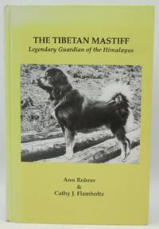



FEDERATION
CYNOLOGIQUE
INTERNATIONALE -
AISBL
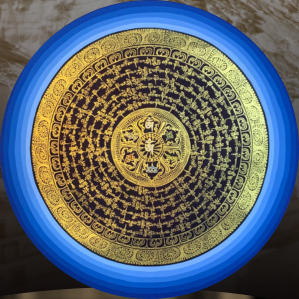






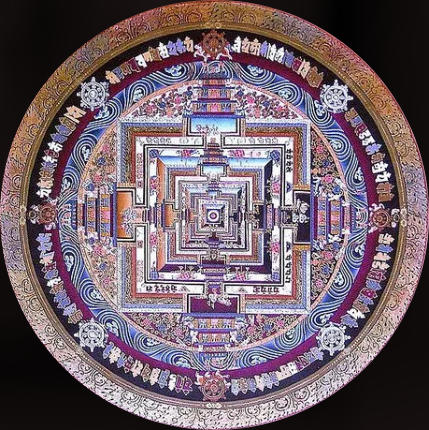


© TIBETAN MASTIFF 2024

Powered By Tibetan Mastiff
owners of AU/NZ 2024




Disclaimer: Information & Fact Sheets
At
TibetanMastiffs.au,
we
are
committed
to
providing
valuable
resources
to
assist
Tibetan
Mastiff
owners
and
enthusiasts.
Our
fact
sheets,
available
in
downloadable
PDF
format,
cover
a
variety
of
topics
ranging
from
breed
characteristics
to
care
guidelines.
We
strive
to
continually
update
and
expand
these
resources
as
new
information
becomes
available
and relevant areas of interest arise.
It
is
important
to
note
that
the
information
provided
in
these
fact
sheets
is
meant
as
a
general
guide.
While
we
take
care
to
ensure
the
accuracy
and
relevance
of
the
data,
it
may
not
be
tailored
to
the
specific
needs
of
every
Tibetan
Mastiff.
Therefore,
we
cannot
be
held
liable
for
any
outcomes
or
decisions
made
based
on
this
information.
For
personalized
advice,
we
strongly
encourage
seeking
guidance
from
reputable
breeders
and qualified veterinarians.
We
extend
our
gratitude
to
all
those
who
have
contributed
their
expertise
to
these
data
sets.
The
respective
authors
of
each
fact
sheet
are
acknowledged
within
the
documents.
We
are
also
open
to
feedback
and
suggestions
for
new
topics
that
could
benefit
the
Tibetan
Mastiff
community.
Thank
you
for
visiting
TibetanMastiffs.au,
and
for
your
dedication
to
the
well-being of this magnificent breed.

Disclaimer: Information & Fact Sheets
At TibetanMastiffs.au, we are committed to providing valuable resources to assist
Tibetan Mastiff owners and enthusiasts. Our fact sheets, available in
downloadable PDF format, cover a variety of topics ranging from breed
characteristics to care guidelines. We strive to continually update and expand
these resources as new information becomes available and relevant areas of
interest arise.
It is important to note that the information provided in these fact sheets is
meant as a general guide. While we take care to ensure the accuracy and
relevance of the data, it may not be tailored to the specific needs of every
Tibetan Mastiff. Therefore, we cannot be held liable for any outcomes or
decisions made based on this information. For personalized advice, we strongly
encourage seeking guidance from reputable breeders and qualified veterinarians.
We extend our gratitude to all those who have contributed their expertise to
these data sets. The respective authors of each fact sheet are acknowledged
within the documents. We are also open to feedback and suggestions for new
topics that could benefit the Tibetan Mastiff community.
Thank you for visiting TibetanMastiffs.au, and for your dedication to the well-
being of this magnificent breed.
Human Failures
in Tibetan
Mastiff
Ownership
UNDERSTANDIN
G MDR1 GENE
MUTATION




© TIBETAN MASTIFF 2024
Powered By Tibetan Mastiff owners of AU/NZ 2024

Did you know?
The Dalai Lama had eight Tibetan Mastiffs guarding his summer residence at Norblinka - two dogs at each entrance. The earliest record of these dogs in England was in 1828 when one was presented to London Zoo - and then the Viceroy of India sent one to Queen Victoria in 1847. In 1970, the breed found another role when Nepalese drug smugglers used them to ship illegal drugs into the US in the bottom of their dog crates. Strangely customs officials weren’t particularly keen to search them!Tibetan Mastiffs in Australia
The first Tibetan Mastiff pair were imported into Australia in early 1983 by Dick and Pauline Leeton of South Australia. A light gold male (Ausables Tudorhill Dalai – Dallas) and a black and tan bitch (Ausables Tudorhill Lama – Panda). These dogs spent 12 months in quarantine in England prior to coming to Australia and were shown extensively during that time. They were the first Tibetan Mastiffs to appear at Crufts in 50 years and both won first in their respective classes. Shortly after this a second bitch, black in colour (Qassaba Ausables Matilda – Tilly), was imported from the UK. These three formed the strong basis of the Tibetan Mastiff breed in Australia. Time immemorial Tibet has always been so isolated, that it’s impossible to say how or when TMs came to be. We know that for millennia they were the mighty guardians of the Himalayas, and it’s thought that they’re the progenitor of all modern mastiffs. Evidence suggests that early travellers to Tibet were sometimes given these giants as gifts, which were used to create the mastiff breeds of the Middle East and Europe.
News
TIBETAN
MASTIFF
-
Majestic
and
Exotic
Canine
that
are
sure
to
take
your
breath
away!
A breed unique in its own right
The Tibetan Mastiff exhibits a unique combination of physical traits that make it stand out. From its beautiful colours and long coat, to its strong and noble stance, the Tibetan Mastiff is truly a sight to behold.Unconditional love and devotion
As loving companions, Tibetan Mastiffs are known for their loyalty and devotion to their family. They're intelligent dogs that will do whatever they can to please their owners, making them great family pets.A personality all their own
Tibetan Mastiffs are independent thinkers who have minds of their own. They can be stubborn at times but still remain gentle and loving with their humans. They're also fearless guardians who will protect their pack with no hesitation. The Tibetan with its large size, long coat, and beautiful tail, its sure to turn heads wherever he goes. But if that's all you're looking for in a dog, the Tibetan Mastiff is not the breed for you. The Tibetan Mastiff is a loving, gentle, and patient breed that has been working closely with humans for centuries. This has made him very sophisticated in the ways he understands people. He's a hard worker, fearless, and loyal, and his large size and substance make him the perfect guard dog. Centuries of breeding for that specific task has perfected him as a protector.








Genetic Study on High-Altitude Adaptation
A recent study has uncovered fascinating details about the Tibetan Mastiff's ability to survive in the harsh, high-altitude environments of the Himalayas. Genetic analysis revealed that Tibetan Mastiffs have specific mutations inherited from Tibetan wolves, enhancing their ability to absorb and release oxygen more effectively. These genetic traits allow them to thrive in environments where other breeds would struggle due to low oxygen levels. The study found that these mutations significantly affect hemoglobin production, making Tibetan Mastiffs highly suited to high-altitude living, a characteristic that has helped define the breed over thousands of years. (livescience.com) .Crufts 2024 and Tibetan Mastiffs
The 2024 Crufts show included notable appearances by Tibetan Mastiffs, demonstrating their enduring appeal and continued presence in competitive dog shows. The event featured the breed's distinct qualities, showcasing their powerful, independent nature and impressive guarding instincts. This exposure helps maintain interest in the breed and reinforces their reputation as one of the world's most formidable guardian dogs. (Archaeology Magazine) .Survival and Breeding with Tibetan Wolves
Further research indicated that at some point in their evolutionary history, Tibetan Mastiffs interbred with Tibetan wolves. This interbreeding passed on crucial genetic traits that enhance their endurance and physical resilience at high altitudes. These unique adaptations make Tibetan Mastiffs not only symbolically linked to their wild counterparts but also genetically suited to the challenging environments of their origin. (https://www.science.org/) . These findings underline the importance of preserving the breed's traditional traits while appreciating its extraordinary evolutionary journey. For more information on the genetic study and other news, you can explore additional details on the Live Science website .Focus on Preservation Amidst Modern
Challenges
Efforts by breed clubs and dedicated breeders continue to focus on preserving the Tibetan Mastiff’s historical traits amidst modern challenges, including the commercialization and cross-breeding seen in some regions. Organizations like ATMA stress the importance of breeding responsibly to maintain the integrity and authenticity of the Tibetan Mastiff, ensuring that its ancient qualities remain intact for future generations. (Tibetan Mastiff Org) . These updates reflect the ongoing commitment to maintaining the Tibetan Mastiff’s legacy as a majestic and resilient breed. For more detailed information on these topics, you can explore the American Tibetan Mastiff Association and related studies on high-altitude adaptation.Tibetan Mastiff Behaviour and Training:
Tibetan Mastiffs are serious, dignified, and independent dogs. They require an assertive leader who can provide consistent training and socialization to manage their protective instincts. The breed is naturally territorial and can be aloof with strangers, making early socialization critical to prevent excessive aggression. While they are calm and quiet indoors, they excel in outdoor environments where they can patrol their territory. Tibetan Mastiffs are not ideal for first-time owners due to their strong-willed nature and need for space and supervision. (Your Pure- bred Puppy).




The Tibetan Mastiff and the Kekhor
In the highlands of Tibet, it’s not uncommon to see a Tibetan Mastiff wearing a traditional collar known as a Kekhor or ske’kor. This unique accessory combines the words “ske” (neck) and “kor” (circle), reflecting its function as a neck collar. Made from yak hair dyed red—though some can be black, yellow, or multi-colored—the Kekhor is more than just a ceremonial decoration. Some collars even feature bells or ancient elements like Yak caudal vertebras to reinforce their structure, highlighting their historical significance. Ancient Origins and Practical Uses The Kekhor has a long and storied history in Tibetan culture. The great Erdene Zuu temple, built in 1585 by Abtai Sain Khan, includes frescoes depicting dogs wearing Kekhors, indicating their ancient origins. Traditionally, the Kekhor serves several important purposes: Breed Identification: The Kekhor helps identify a dog as a purebred Tibetan Mastiff, a vital feature in areas where these dogs play critical roles as guardians. Visual Recognition: From a distance, the Kekhor helps owners distinguish their dogs from wildlife, such as bears, due to the collar’s distinct appearance. Intimidation of Predators: The large, fluttering yak hair makes the dog appear even more imposing, potentially deterring predators. In the wild, Tibetan Mastiffs face threats from snow leopards and wolves, and the Kekhor can make them look more formidable. Neck Protection: Beyond aesthetics, Tibetan owners believe that the Kekhor offers extra protection to the dog’s neck during attacks from predators, acting as a barrier against bites. Modern Appeal and Considerations Kekhors are not just functional; they are also visually stunning and sometimes used as decorative elements in homes. Although available commercially, it’s essential for buyers to be aware of their authentic nature. Freshly made Kekhors often have a strong odor reminiscent of yaks in a barnyard, which can be quite pungent. Many people choose to air out new Kekhors outdoors until the scent neutralizes.The First Tibetan Mastiff in America
While the Tibetan Mastiff was officially recognized by the American Kennel Club (AKC) in 2007, the breed's presence in the United States dates back to much earlier, with one of the most notable introductions involving President Dwight D. Eisenhower. In the 1950s, the Dalai Lama gifted Eisenhower a 10-month-old male and an 8-month-old female Tibetan Mastiff as a diplomatic gesture. The Dalai Lama, who famously kept eight Tibetan Mastiffs to guard his summer residence in Norbulinka, shared his appreciation for the breed through this rare and prestigious gift. However, Eisenhower, not in a position to care for the dogs, passed them on to a U.S. senator. The senator raised the dogs and eventually gifted one to the renowned explorer Lowell Thomas. These dogs, described as voracious eaters consuming “four pounds of fresh meat at each meal,” became foundational ancestors of many Tibetan Mastiffs in the United States today. This early entry into American soil not only highlighted the breed’s significance as a diplomatic gift but also set the stage for the Tibetan Mastiff’s gradual recognition and popularity in the Western world. Their unique blend of loyalty, guarding instincts, and ancient heritage continues to captivate enthusiasts and dog lovers alike. Tibetan Mastiff by Judith Stein – This piece of history is chronicled by Judith Stein, an expert who has documented the breed's journey and significance, reflecting on how these majestic guardians made their mark far from their Himalayan origins.




BONO - Temzin
MOMOA - Temzin
MOMOA - Temzin
THUNDER - Temzin





Mindful, Present
We deeply respect traditional knowledge about Tibetan breeds, especially insights from His Eminence, the 5th Gonsar Rinpoche. Born in Shigatse, Tibet in 1949, Rinpoche is a spiritual leader in the Gonsar Tulku lineage and a practitioner of the Hayagriva Tantras. According to Rinpoche, black and tan Tibetan Mastiffs are particularly favored as guard dogs due to their intimidating appearance. The dark coloring is believed to deter intruders with a strong “don’t even think about entering this house” impact. The tan spots above their eyes, known as “four eyes,” give the illusion that the dog is always alert, even while resting, and are believed to possess mystical properties that protect against evil spirits, such as demons. These spiritual beliefs reinforce the breed’s role as a guardian not just of homes, but also of the spiritual well-being of its owners. Rinpoche’s teachings highlight the importance of these colors and markings in Tibetan culture, emphasizing that they are more than mere aesthetics; they are symbols of the dog’s protective nature, both physically and metaphysically. The Tibetan Mastiff’s role extends beyond guarding property to include safeguarding the spiritual space of its surroundings. This belief in the mystical protective power of the Tibetan Mastiff continues to influence color preferences in the breed today, alongside the AKC’s recognized colors of black, brown, blue/grey, and gold, all with or without tan markings. The Tibetan Mastiff’s imposing presence, enhanced by the Kekhor collars and its distinctive coloring, not only serves as a visual deterrent to potential intruders but also connects the breed deeply with Tibetan spiritual and cultural traditions. These dogs are seen as more than guardians; they are living symbols of ancient wisdom and protective energy, cherished in their homeland and beyond.

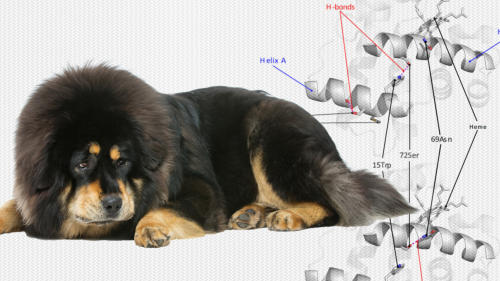



For millennia, the massive Tibetan Mastiff has laid literal claim to the label “top dog.”
The fierce breed, which boasts a lionesque mane and can reach 70 kgs, has long protected Himalayan flocks of sheep from Tibetan wolves and other predators lurking upward of 15,000 feet above sea level — heights no other domestic breed can survive. Prior research suggests the Tibetan mastiff took an evolutionary shortcut by breeding with the Tibetan wolf, which had already adapted to the altitude by evolving more efficient hemoglobin: the protein that snares oxygen in the bloodstream and distributes it to organs. The University of Nebraska–Lincoln’s Jay Storz, Tony Signore and colleagues have now determined that sleeping with the enemy granted the Tibetan mastiff a hemoglobin architecture that catches and releases oxygen about 50% more efficiently than in other dog breeds. Signore reached the conclusion after testing the Tibetan mastiff hemoglobin against that of multiple domestic breeds, including Storz’s own half-Great Pyrenees, half-Irish wolfhound. “At altitude, the problem is taking in oxygen, because there’s just less of it,” said Signore, a postdoctoral researcher working in Storz’s lab. “If you think of hemoglobin like an oxygen magnet, this magnet’s just stronger.” The Nebraska researchers, who collaborated with colleagues at Qinghai University in China, already knew that the Tibetan mastiff’s hemoglobin included changes in two amino acids — slight modifications to the structure of the protein — that are present in the Tibetan wolf but absent in all other dog breeds. By engineering and then testing hemoglobins that contained both amino acid mutations vs. just one or the other, the team discovered that both mutations are crucial to the adaptive change in hemoglobin performance. When either mutation was absent, the hemoglobin performed no differently than that of other dog breeds. “There had been no direct evidence documenting that, yes, these two unique mutations have some beneficial physiological effect that is likely to be adaptive at high altitude,” said Storz, professor of biological sciences and author of a recent book on hemoglobin. “What we’ve discovered is one of the reasons why the Tibetan mastiff is so different from other dogs. And that’s because it’s borrowed a few things from Tibetan wolves.” Those two amino acid mutations originate from a gene segment that the Tibetan wolf passed to the mastiff via cross-breeding. But the new study also suggests that the gene segment itself came from an inactive gene — a so-called pseudo-gene — that lay dormant in the wolf subspecies for probably thousands of years. At some point, the pseudo-gene segment harboring the two mutations was copied and pasted into the corresponding segment of a similar but active gene, which then reformatted the Tibetan wolf’s hemoglobin. Because those mutations came from an inactive gene — one with no physiological effects on the wolf — they weren’t initially subject to the pressures of natural selection. In this instance, though, the mutations just so happened to improve the oxygen-binding capacity of hemoglobin, raising the Tibetan wolf’s survival odds. That encouraged the passage of the gene segment through subsequent generations of the wolf and, eventually, to the Tibetan mastiff. “They wouldn’t have conferred any benefit under normal circumstances,” Storz said. “It was just (that) this conversion event occurred in an environmental context where the increase in hemoglobin-oxygen affinity would have been beneficial. So mutations that otherwise would have been either neutral or even detrimental actually had a positive fitness effect.” Storz said there are few other documented cases where an initially inconsequential or adverse mutation ultimately benefited an organism as its environment changed. And most such cases have involved experimental studies on micro-organisms in the lab. “This is a nice example of the effect involving vertebrate animals and the natural environment,” he said. The researchers reported their findings in the journal Molecular Biology and Evolution. Storz and Signore authored the study with Nebraska’s Hideaki Moriyama, associate professor of biological sciences, along with Qinghai University’s Ri-Li Ge, Ying-Zhong Yang, Quan-Yu Yang and Ga Qin. The team received support from the National Science Foundation and the National Institutes of Health under grant No. HL087216. NEWS.UNL.EDU By Scott Schrage | University Communication and Marketing
Powered By Tibetan Mastiff owners of AU/NZ 2024

KHAAN - Temzin
KHAAN - Temzin
TANE - Temzin
TANE - Temzin







© TIBETAN MASTIFF 2024
Powered By Tibetan Mastiff
owners of AU/NZ 2024
Did you know?
The Dalai Lama had eight Tibetan Mastiffs guarding his summer residence at Norblinka - two dogs at each entrance. The earliest record of these dogs in England was in 1828 when one was presented to London Zoo - and then the Viceroy of India sent one to Queen Victoria in 1847. In 1970, the breed found another role when Nepalese drug smugglers used them to ship illegal drugs into the US in the bottom of their dog crates. Strangely customs officials weren’t particularly keen to search them!Tibetan Mastiffs in Australia
The first Tibetan Mastiff pair were imported into Australia in early 1983 by Dick and Pauline Leeton of South Australia. A light gold male (Ausables Tudorhill Dalai – Dallas) and a black and tan bitch (Ausables Tudorhill Lama – Panda). These dogs spent 12 months in quarantine in England prior to coming to Australia and were shown extensively during that time. They were the first Tibetan Mastiffs to appear at Crufts in 50 years and both won first in their respective classes. Shortly after this a second bitch, black in colour (Qassaba Ausables Matilda – Tilly), was imported from the UK. These three formed the strong basis of the Tibetan Mastiff breed in Australia. Time immemorial Tibet has always been so isolated, that it’s impossible to say how or when TMs came to be. We know that for millennia they were the mighty guardians of the Himalayas, and it’s thought that they’re the progenitor of all modern mastiffs. Evidence suggests that early travellers to Tibet were sometimes given these giants as gifts, which were used to create the mastiff breeds of the Middle East and Europe.

News
TIBETAN
MASTIFF
-
Majestic
and
Exotic
Canine
that
are
sure
to
take
your
breath
away!
A breed unique in its own right
The Tibetan Mastiff exhibits a unique combination of physical traits that make it stand out. From its beautiful colours and long coat, to its strong and noble stance, the Tibetan Mastiff is truly a sight to behold.Unconditional love and devotion
As loving companions, Tibetan Mastiffs are known for their loyalty and devotion to their family. They're intelligent dogs that will do whatever they can to please their owners, making them great family pets.A personality all their own
Tibetan Mastiffs are independent thinkers who have minds of their own. They can be stubborn at times but still remain gentle and loving with their humans. They're also fearless guardians who will protect their pack with no hesitation. The Tibetan with its large size, long coat, and beautiful tail, its sure to turn heads wherever he goes. But if that's all you're looking for in a dog, the Tibetan Mastiff is not the breed for you. The Tibetan Mastiff is a loving, gentle, and patient breed that has been working closely with humans for centuries. This has made him very sophisticated in the ways he understands people. He's a hard worker, fearless, and loyal, and his large size and substance make him the perfect guard dog. Centuries of breeding for that specific task has perfected him as a protector.










Genetic Study on High-Altitude Adaptation
A recent study has uncovered fascinating details about the Tibetan Mastiff's ability to survive in the harsh, high-altitude environments of the Himalayas. Genetic analysis revealed that Tibetan Mastiffs have specific mutations inherited from Tibetan wolves, enhancing their ability to absorb and release oxygen more effectively. These genetic traits allow them to thrive in environments where other breeds would struggle due to low oxygen levels. The study found that these mutations significantly affect hemoglobin production, making Tibetan Mastiffs highly suited to high-altitude living, a characteristic that has helped define the breed over thousands of years. (livescience.com) .Crufts 2024 and Tibetan Mastiffs
The 2024 Crufts show included notable appearances by Tibetan Mastiffs, demonstrating their enduring appeal and continued presence in competitive dog shows. The event featured the breed's distinct qualities, showcasing their powerful, independent nature and impressive guarding instincts. This exposure helps maintain interest in the breed and reinforces their reputation as one of the world's most formidable guardian dogs. (Archaeology Magazine) .Survival and Breeding with Tibetan Wolves
Further research indicated that at some point in their evolutionary history, Tibetan Mastiffs interbred with Tibetan wolves. This interbreeding passed on crucial genetic traits that enhance their endurance and physical resilience at high altitudes. These unique adaptations make Tibetan Mastiffs not only symbolically linked to their wild counterparts but also genetically suited to the challenging environments of their origin. (https://www.science.org/) . These findings underline the importance of preserving the breed's traditional traits while appreciating its extraordinary evolutionary journey. For more information on the genetic study and other news, you can explore additional details on the Live Science website .
Focus
on
Preservation
Amidst
Modern
Challenges
Efforts by breed clubs and dedicated breeders continue to focus on preserving the Tibetan Mastiff’s historical traits amidst modern challenges, including the commercialization and cross-breeding seen in some regions. Organizations like ATMA stress the importance of breeding responsibly to maintain the integrity and authenticity of the Tibetan Mastiff, ensuring that its ancient qualities remain intact for future generations. (Tibetan Mastiff Org) . These updates reflect the ongoing commitment to maintaining the Tibetan Mastiff’s legacy as a majestic and resilient breed. For more detailed information on these topics, you can explore the American Tibetan Mastiff Association and related studies on high-altitude adaptation.
The Tibetan Mastiff and the Kekhor
In the highlands of Tibet, it’s not uncommon to see a Tibetan Mastiff wearing a traditional collar known as a Kekhor or ske’kor. This unique accessory combines the words “ske” (neck) and “kor” (circle), reflecting its function as a neck collar. Made from yak hair dyed red—though some can be black, yellow, or multi-colored—the Kekhor is more than just a ceremonial decoration. Some collars even feature bells or ancient elements like Yak caudal vertebras to reinforce their structure, highlighting their historical significance. Ancient Origins and Practical Uses The Kekhor has a long and storied history in Tibetan culture. The great Erdene Zuu temple, built in 1585 by Abtai Sain Khan, includes frescoes depicting dogs wearing Kekhors, indicating their ancient origins. Traditionally, the Kekhor serves several important purposes: Breed Identification: The Kekhor helps identify a dog as a purebred Tibetan Mastiff, a vital feature in areas where these dogs play critical roles as guardians. Visual Recognition: From a distance, the Kekhor helps owners distinguish their dogs from wildlife, such as bears, due to the collar’s distinct appearance. Intimidation of Predators: The large, fluttering yak hair makes the dog appear even more imposing, potentially deterring predators. In the wild, Tibetan Mastiffs face threats from snow leopards and wolves, and the Kekhor can make them look more formidable. Neck Protection: Beyond aesthetics, Tibetan owners believe that the Kekhor offers extra protection to the dog’s neck during attacks from predators, acting as a barrier against bites. Modern Appeal and Considerations Kekhors are not just functional; they are also visually stunning and sometimes used as decorative elements in homes. Although available commercially, it’s essential for buyers to be aware of their authentic nature. Freshly made Kekhors often have a strong odor reminiscent of yaks in a barnyard, which can be quite pungent. Many people choose to air out new Kekhors outdoors until the scent neutralizes.
BONO - Temzin

Tibetan Mastiff Behaviour and Training:
Tibetan Mastiffs are serious, dignified, and independent dogs. They require an assertive leader who can provide consistent training and socialization to manage their protective instincts. The breed is naturally territorial and can be aloof with strangers, making early socialization critical to prevent excessive aggression. While they are calm and quiet indoors, they excel in outdoor environments where they can patrol their territory. Tibetan Mastiffs are not ideal for first-time owners due to their strong- willed nature and need for space and supervision. (Your Pure-bred Puppy).
The First Tibetan Mastiff in America
While the Tibetan Mastiff was officially recognized by the American Kennel Club (AKC) in 2007, the breed's presence in the United States dates back to much earlier, with one of the most notable introductions involving President Dwight D. Eisenhower. In the 1950s, the Dalai Lama gifted Eisenhower a 10-month-old male and an 8-month- old female Tibetan Mastiff as a diplomatic gesture. The Dalai Lama, who famously kept eight Tibetan Mastiffs to guard his summer residence in Norbulinka, shared his appreciation for the breed through this rare and prestigious gift. However, Eisenhower, not in a position to care for the dogs, passed them on to a U.S. senator. The senator raised the dogs and eventually gifted one to the renowned explorer Lowell Thomas. These dogs, described as voracious eaters consuming “four pounds of fresh meat at each meal,” became foundational ancestors of many Tibetan Mastiffs in the United States today. This early entry into American soil not only highlighted the breed’s significance as a diplomatic gift but also set the stage for the Tibetan Mastiff’s gradual recognition and popularity in the Western world. Their unique blend of loyalty, guarding instincts, and ancient heritage continues to captivate enthusiasts and dog lovers alike. Tibetan Mastiff by Judith Stein – This piece of history is chronicled by Judith Stein, an expert who has documented the breed's journey and significance, reflecting on how these majestic guardians made their mark far from their Himalayan origins.
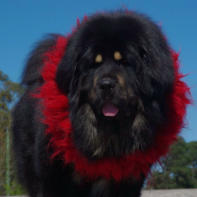

MOMOA - Temzin
THUNDER - Temzin
Mindful, Present
We deeply respect traditional knowledge about Tibetan breeds, especially insights from His Eminence, the 5th Gonsar Rinpoche. Born in Shigatse, Tibet in 1949, Rinpoche is a spiritual leader in the Gonsar Tulku lineage and a practitioner of the Hayagriva Tantras. According to Rinpoche, black and tan Tibetan Mastiffs are particularly favored as guard dogs due to their intimidating appearance. The dark coloring is believed to deter intruders with a strong “don’t even think about entering this house” impact. The tan spots above their eyes, known as “four eyes,” give the illusion that the dog is always alert, even while resting, and are believed to possess mystical properties that protect against evil spirits, such as demons. These spiritual beliefs reinforce the breed’s role as a guardian not just of homes, but also of the spiritual well-being of its owners. Rinpoche’s teachings highlight the importance of these colors and markings in Tibetan culture, emphasizing that they are more than mere aesthetics; they are symbols of the dog’s protective nature, both physically and metaphysically. The Tibetan Mastiff’s role extends beyond guarding property to include safeguarding the spiritual space of its surroundings. This belief in the mystical protective power of the Tibetan Mastiff continues to influence color preferences in the breed today, alongside the AKC’s recognized colors of black, brown, blue/grey, and gold, all with or without tan markings. The Tibetan Mastiff’s imposing presence, enhanced by the Kekhor collars and its distinctive coloring, not only serves as a visual deterrent to potential intruders but also connects the breed deeply with Tibetan spiritual and cultural traditions. These dogs are seen as more than guardians; they are living symbols of ancient wisdom and protective energy, cherished in their homeland and beyond.

For millennia, the massive Tibetan Mastiff has
laid literal claim to the label “top dog.”
The fierce breed, which boasts a lionesque mane and can reach 70 kgs, has long protected Himalayan flocks of sheep from Tibetan wolves and other predators lurking upward of 15,000 feet above sea level — heights no other domestic breed can survive. Prior research suggests the Tibetan mastiff took an evolutionary shortcut by breeding with the Tibetan wolf, which had already adapted to the altitude by evolving more efficient hemoglobin: the protein that snares oxygen in the bloodstream and distributes it to organs. The University of Nebraska–Lincoln’s Jay Storz, Tony Signore and colleagues have now determined that sleeping with the enemy granted the Tibetan mastiff a hemoglobin architecture that catches and releases oxygen about 50% more efficiently than in other dog breeds. Signore reached the conclusion after testing the Tibetan mastiff hemoglobin against that of multiple domestic breeds, including Storz’s own half-Great Pyrenees, half-Irish wolfhound. “At altitude, the problem is taking in oxygen, because there’s just less of it,” said Signore, a postdoctoral researcher working in Storz’s lab. “If you think of hemoglobin like an oxygen magnet, this magnet’s just stronger.” The Nebraska researchers, who collaborated with colleagues at Qinghai University in China, already knew that the Tibetan mastiff’s hemoglobin included changes in two amino acids — slight modifications to the structure of the protein — that are present in the Tibetan wolf but absent in all other dog breeds. By engineering and then testing hemoglobins that contained both amino acid mutations vs. just one or the other, the team discovered that both mutations are crucial to the adaptive change in hemoglobin performance. When either mutation was absent, the hemoglobin performed no differently than that of other dog breeds. “There had been no direct evidence documenting that, yes, these two unique mutations have some beneficial physiological effect that is likely to be adaptive at high altitude,” said Storz, professor of biological sciences and author of a recent book on hemoglobin. “What we’ve discovered is one of the reasons why the Tibetan mastiff is so different from other dogs. And that’s because it’s borrowed a few things from Tibetan wolves.” Those two amino acid mutations originate from a gene segment that the Tibetan wolf passed to the mastiff via cross-breeding. But the new study also suggests that the gene segment itself came from an inactive gene — a so-called pseudo-gene — that lay dormant in the wolf subspecies for probably thousands of years. At some point, the pseudo-gene segment harboring the two mutations was copied and pasted into the corresponding segment of a similar but active gene, which then reformatted the Tibetan wolf’s hemoglobin. Because those mutations came from an inactive gene — one with no physiological effects on the wolf — they weren’t initially subject to the pressures of natural selection. In this instance, though, the mutations just so happened to improve the oxygen-binding capacity of hemoglobin, raising the Tibetan wolf’s survival odds. That encouraged the passage of the gene segment through subsequent generations of the wolf and, eventually, to the Tibetan mastiff. “They wouldn’t have conferred any benefit under normal circumstances,” Storz said. “It was just (that) this conversion event occurred in an environmental context where the increase in hemoglobin-oxygen affinity would have been beneficial. So mutations that otherwise would have been either neutral or even detrimental actually had a positive fitness effect.” Storz said there are few other documented cases where an initially inconsequential or adverse mutation ultimately benefited an organism as its environment changed. And most such cases have involved experimental studies on micro-organisms in the lab. “This is a nice example of the effect involving vertebrate animals and the natural environment,” he said. The researchers reported their findings in the journal Molecular Biology and Evolution. Storz and Signore authored the study with Nebraska’s Hideaki Moriyama, associate professor of biological sciences, along with Qinghai University’s Ri-Li Ge, Ying-Zhong Yang, Quan-Yu Yang and Ga Qin. The team received support from the National Science Foundation and the National Institutes of Health under grant No. HL087216. NEWS.UNL.EDU By Scott Schrage | University Communication and Marketing


KHAAN - Temzin
KHAAN - Temzin
TANE - Temzin
TANE - Temzin












© TIBETAN MASTIFF 2024
Powered By Tibetan Mastiff owners of AU/NZ 2024
Gallery
The Photo Gallery: A Visual Journey
Through The World Of Tibetan Mastiffs
The Photo Gallery: A Visual Journey in our World of Tibetan Mastiffs" is an immersive experience that takes visitors on a journey through the fascinating world of these majestic dogs. The gallery features stunning photographs capturing the beauty, grace, and power of Tibetan Mastiffs, showcasing their unique personalities and traits. Each photo tells a story, from the tender moments between a puppy and its mother to the regal stance of an adult dog in all their glory. Visitors can also learn about the history and cultural significance of this ancient breed through informative displays and educational materials. Whether you're a seasoned dog lover or simply curious about this magnificent breed, "The Photo Gallery" offers a captivating glimpse into the world of Tibetan Mastiffs.







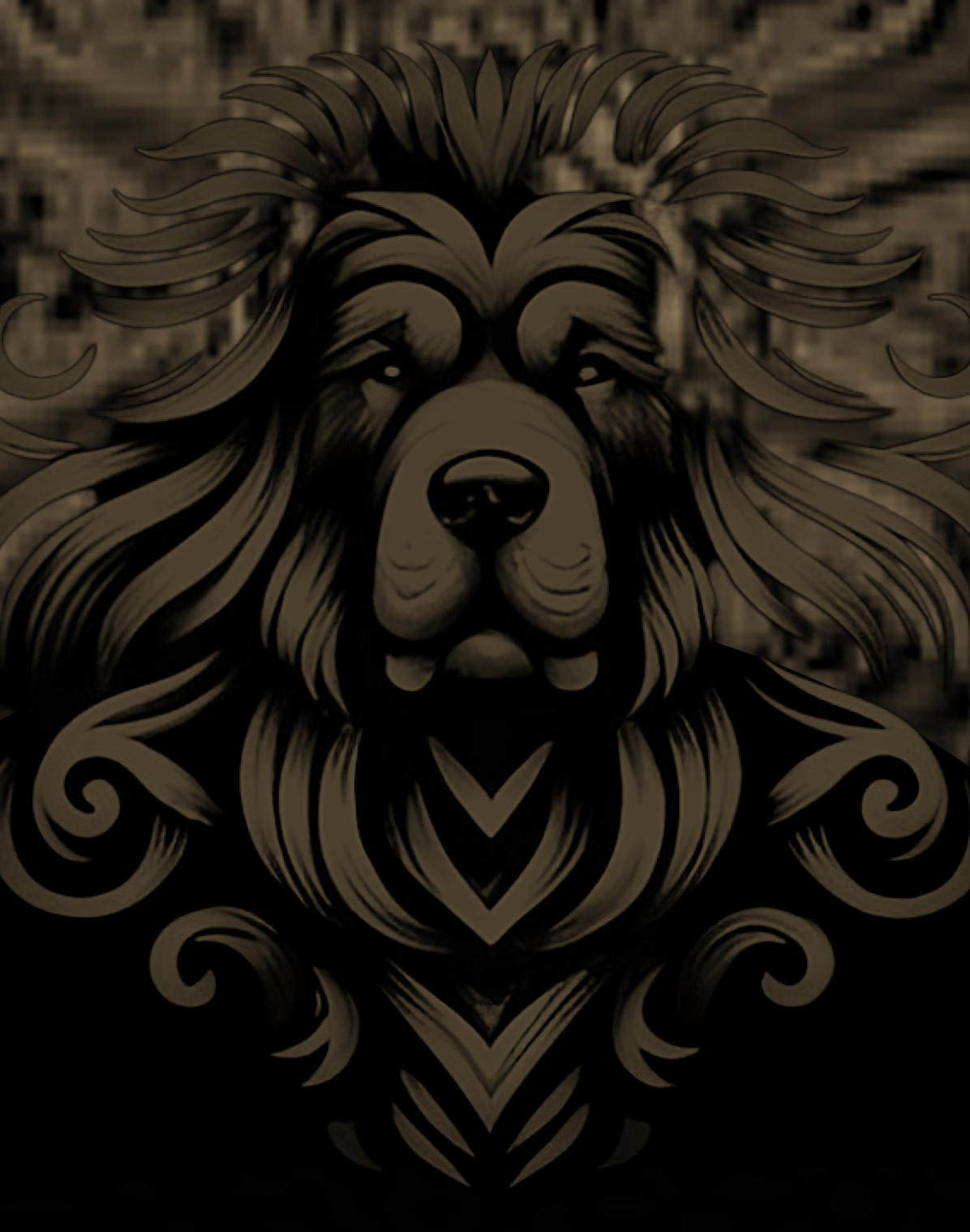

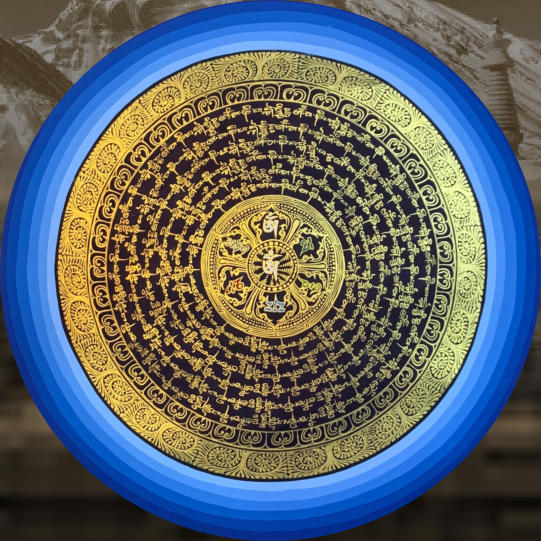





Powered By Tibetan Mastiff owners of AU/NZ 2024

A Special Thank You to All Tibetan Mastiff Owners
To all the wonderful Tibetan Mastiff owners who have graciously shared
moments of their incredible companions, thank you! Your stories,
experiences, and the unique world you’ve opened up are truly inspiring.
Each Tibetan Mastiff has a personality as vast as the landscapes they
love to roam, and it's been a privilege to witness glimpses of their lives
through your eyes.
Your passion and love for these majestic beings help build a deeper
appreciation for the breed and the bond they form with us. Here’s to the
joy, challenges, and the unforgettable moments shared in the company
of these magnificent dogs. May their world of loyalty, strength, and
grace continue to enrich our lives.
With great gratitude, MATT TESHIN






© TIBETAN MASTIFF 2024
Powered By Tibetan Mastiff
owners of AU/NZ 2024
Gallery
The Photo Gallery: A Visual Journey
Through The World Of Tibetan Mastiffs
The Photo Gallery: A Visual Journey in our World of Tibetan Mastiffs" is an immersive experience that takes visitors on a journey through the fascinating world of these majestic dogs. The gallery features stunning photographs capturing the beauty, grace, and power of Tibetan Mastiffs, showcasing their unique personalities and traits. Each photo tells a story, from the tender moments between a puppy and its mother to the regal stance of an adult dog in all their glory. Visitors can also learn about the history and cultural significance of this ancient breed through informative displays and educational materials. Whether you're a seasoned dog lover or simply curious about this magnificent breed, "The Photo Gallery" offers a captivating glimpse into the world of Tibetan Mastiffs.













A Special Thank You to All Tibetan
Mastiff Owners
To all the wonderful Tibetan Mastiff owners who have graciously shared moments of their incredible companions, thank you! Your stories, experiences, and the unique world you’ve opened up are truly inspiring. Each Tibetan Mastiff has a personality as vast as the landscapes they love to roam, and it's been a privilege to witness glimpses of their lives through your eyes. Your passion and love for these majestic beings help build a deeper appreciation for the breed and the bond they form with us. Here’s to the joy, challenges, and the unforgettable moments shared in the company of these magnificent beings. May their world of loyalty, strength, and grace continue to enrich our lives. With great gratitude, MATT TESHIN




Contact
Tibetan Mastiff Australia & New
Zealand
Kirstie Bain ( Waikato, New Zealand ) kirstieb@slingshot.co.nz w: kirstiebain.co.nz f: https://www.facebook.com/kirstie.bain Matteo De Pinto ( Perth, Australia ) f: https://www.facebook.com/MattTeshin/ i:https://www.instagram.com/Matt%20te shin/ m: 0460049600 teshintibetanmastiff@gmail.com www.tibetanmastiffs.au tibetanmastiffau@gmail.com
Our local & International partner links:
Tibetan Mastiff Do Khyi World
( International )
Are you fascinated by the majestic Tibetan Mastiff, one of the world’s oldest and most revered guard dogs from the highlands of Tibet and the Himalayan regions? Join our Facebook group, "Tibetan Mastiff Do Khyi World," and become part of a vibrant global community dedicated to these incredible dogs. Join us on Facebook and discover the world of Tibetan Mastiffs like never before. Whether you're a long-time owner or just curious about the breed, our group welcomes you to learn, share, and celebrate these magnificent dogs!Sanna Sander ( Sweden )
Hello, I'm Sanna, a passionate admirer of the Tibetan Mastiff breed. I’m not a breeder, just a devoted fan who has been sharing my life with these incredible dogs since 2007. My journey with Tibetan Mastiffs began with my first two beloved boys, Zodd (Fu-Hsing Sundari) and Temudjin (Legenda Tibeta Temudzhin), who are sadly no longer with me but remain forever in my heart. Today, I share my home with two wonderful Tibetan Mastiffs: Embla (Lhuntse Embla Drokpa): A gentle, attentive girl with a strong bond to her family. Ask (Manam Ask Drokpa): A protective and loyal guardian, always by my side. My first Tibetan Mastiff, Zodd , was the one who sparked my love for this extraordinary breed. His legacy continues to inspire me, and if you’d like to learn more about him, feel free to visit his dedicated homepage: www.zodd.se. I’m grateful to be part of the Tibetan Mastiff community, surrounded by the love and loyalty of these magnificent dogs. I look forward to connecting with others who share this passion!





© TIBETAN MASTIFF 2024



Australian Breeders Links
TEMZIN
Charmaine ALLEN Location : Ellerslie VIC https://temzin.com/AMITABHA
Bronwen Dickson Location : Ipswich QLD https://www.amitabha.com.au/BUSHSONG
Greg Green Location : Ironbank SABRAVURA
Name : Jim Burke Town : Bunyip, VIC https://bravura.com.au/BERNTIFF
Ms Judith Brunton Location : Murrumbateman NSWARDORNMERAKI
Stacey Barlow Town : Grovedale, VICPAWLEE
Cheryl Leeton Location : Stirling, SAXINGXI
Leanne Zhang Location :Brisbane QLDBAYDONSLANE
Deb Wetherill Location :Central Coast NSW










SOCIAL MEDIA LINKS

Tibetan Mastiff Breeders and Owners International




Powered By Tibetan Mastiff owners of AU/NZ 2024

A Heartfelt Thank You to All Who Helped Making TIBETANMASTIFFS.AU
Possible
To all those who have contributed to the creation and success of TIBETANMASTIFFS.AU, we extend our deepest and most sincere gratitude. This platform would not be possible without the invaluable input and knowledge shared by the dedicated community of Tibetan Mastiff owners, breeders, and enthusiasts. To the many experienced breeders who have spent lifetimes nurturing and preserving the Tibetan Mastiff bloodlines, we offer profound respect. Through your dedication to ethical breeding, commitment to maintaining true standards, and unwavering respect for the history and origins of this ancient breed, the Tibetan Mastiff remains as majestic, noble, and loyal today as it was millennia ago. The preservation of these bloodlines has safeguarded the unique characteristics and natural instincts that define the Tibetan Mastiff, and for this, we are immensely thankful. To the owners who share their everyday lives with these magnificent dogs, your stories and experiences have brought richness and depth to TIBETANMASTIFFS.AU. Each of you plays a vital role in celebrating the breed's legacy, and we are grateful for the moments, insights, and love you contribute. Because of your collective efforts—breeders, owners, and guardians alike—the Tibetan Mastiff continues to thrive, retaining its ancient spirit, unmatched loyalty, and impressive presence. We, as a community, are privileged to enjoy and learn from these extraordinary beings today, thanks to the knowledge, passion, and dedication of those who have come before us and those who continue this noble work. With the utmost respect and heartfelt appreciation, Tibetan Mastiff owners.




Welcome to Tibetan Mastiff Breeders and Owners International!
This
group
connects
passionate
breeders,
owners,
and
enthusiasts
worldwide.
Our
mission
is
to
promote
responsible
breeding,
ethical
ownership, and the preservation of this magnificent breed.
Join
us
to
share
knowledge,
seek
advice,
and
celebrate
the
unique
journey
of
living with Tibetan Mastiffs in a supportive, respectful community. Welcome!



TibetanMastiff.AU Facebook Group
Welcome
to
TibetanMastiffs.au
–
a
community
where
passion
for
Tibetan
Mastiffs
meets
shared
wisdom!
Here,
seasoned
owners
and
newcomers
alike
come
together
to
exchange
experiences,
insights,
and
stories
that
deepen
our
understanding
of
these
magnificent
dogs.
Whether
you're
here
to
learn,
share,
or
simply
celebrate
the
unique
heritage
of
the
Tibetan
Mastiff,
you'll
find
a
safe
and
supportive
space
where
every
contribution
helps
us
grow
together.
Welcome
to
the
family—let's
evolve
and
enjoy
the
journey
with
our
extraordinary companions!






Contact
Tibetan Mastiff Australia & New
Zealand
Kirstie Bain ( Waikato, New Zealand ) kirstieb@slingshot.co.nz w: kirstiebain.co.nz f: https://www.facebook.com/kirstie.bain Matteo De Pinto ( Perth, Australia ) f: https://www.facebook.com/MattTeshin/ i:https://www.instagram.com/Matt%20teshin/ m: 0460049600 teshintibetanmastiff@gmail.com www.tibetanmastiffs.au tibetanmastiffau@gmail.com
Our local & International partner
links:
Tibetan Mastiff Do Khyi World
( International )
Are you fascinated by the majestic Tibetan Mastiff, one of the world’s oldest and most revered guard dogs from the highlands of Tibet and the Himalayan regions? Join our Facebook group, "Tibetan Mastiff Do Khyi World," and become part of a vibrant global community dedicated to these incredible dogs. Join us on Facebook and discover the world of Tibetan Mastiffs like never before. Whether you're a long-time owner or just curious about the breed, our group welcomes you to learn, share, and celebrate these magnificent dogs!Sanna Sander ( Sweden )
Hello, I'm Sanna, a passionate admirer of the Tibetan Mastiff breed. I’m not a breeder, just a devoted fan who has been sharing my life with these incredible dogs since 2007. My journey with Tibetan Mastiffs began with my first two beloved boys, Zodd (Fu-Hsing Sundari) and Temudjin (Legenda Tibeta Temudzhin), who are sadly no longer with me but remain forever in my heart. Today, I share my home with two wonderful Tibetan Mastiffs: Embla (Lhuntse Embla Drokpa): A gentle, attentive girl with a strong bond to her family. Ask (Manam Ask Drokpa): A protective and loyal guardian, always by my side. My first Tibetan Mastiff, Zodd , was the one who sparked my love for this extraordinary breed. His legacy continues to inspire me, and if you’d like to learn more about him, feel free to visit his dedicated homepage: www.zodd.se. I’m grateful to be part of the Tibetan Mastiff community, surrounded by the love and loyalty of these magnificent dogs. I look forward to connecting with others who share this passion!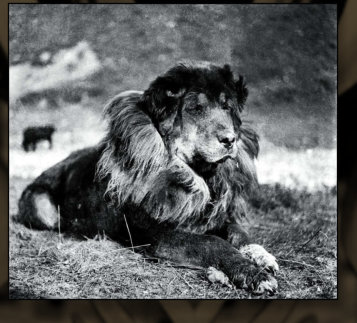












© TIBETAN MASTIFF 2024
TEMZIN
Charmaine ALLEN Location : Ellerslie VIC https://temzin.com/AMITABHA
Bronwen Dickson Location : Ipswich QLD https://www.amitabha.com.au/BUSHSONG
Greg Green Location : Ironbank SABRAVURA
Name : Jim Burke Town : Bunyip, VIC https://bravura.com.au/BERNTIFF
Ms Judith Brunton Location : Murrumbateman NSWARDORNMERAKI
Stacey Barlow Town : Grovedale, VICPAWLEE
Cheryl Leeton Location : Stirling, SAXINGXI
Leanne Zhang Location :Brisbane QLDBAYDONSLANE
Deb Wetherill Location :Central Coast NSWAustralian Breeders Links




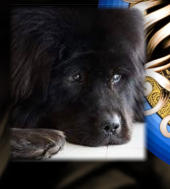


Tibetan Mastiff Breeders and Owners
International


Powered By Tibetan Mastiff
owners of AU/NZ 2024



A Heartfelt Thank You to All
Who Made
TIBETANMASTIFFS.AU Possible
To all those who have contributed to the creation and success of TIBETANMASTIFFS.AU, we extend our deepest and most sincere gratitude. This platform would not be possible without the invaluable input and knowledge shared by the dedicated community of Tibetan Mastiff owners, breeders, and enthusiasts. To the many experienced breeders who have spent lifetimes nurturing and preserving the Tibetan Mastiff bloodlines, we offer profound respect. Through your dedication to ethical breeding, commitment to maintaining true standards, and unwavering respect for the history and origins of this ancient breed, the Tibetan Mastiff remains as majestic, noble, and loyal today as it was millennia ago. The preservation of these bloodlines has safeguarded the unique characteristics and natural instincts that define the Tibetan Mastiff, and for this, we are immensely thankful. To the owners who share their everyday lives with these magnificent dogs, your stories and experiences have brought richness and depth to TIBETANMASTIFFS.AU. Each of you plays a vital role in celebrating the breed's legacy, and we are grateful for the moments, insights, and love you contribute. Because of your collective efforts—breeders, owners, and guardians alike—the Tibetan Mastiff continues to thrive, retaining its ancient spirit, unmatched loyalty, and impressive presence. We, as a community, are privileged to enjoy and learn from these extraordinary dogs today, thanks to the knowledge, passion, and dedication of those who have come before us and those who continue this noble work. With the utmost respect and heartfelt appreciation, Tibetan Mastiff owners.
Welcome
to
Tibetan
Mastiff
Breeders
and
Owners
International!
This
group
connects
passionate
breeders,
owners,
and
enthusiasts
worldwide.
Our
mission
is
to
promote
responsible
breeding,
ethical
ownership,
and
the
preservation of this magnificent breed.
Join
us
to
share
knowledge,
seek
advice,
and
celebrate
the
unique
journey
of
living
with
Tibetan
Mastiffs
in
a
supportive, respectful community. Welcome!

Welcome
to
TibetanMastiffs.au
–
a
community
where
passion
for
Tibetan
Mastiffs
meets
shared
wisdom!
Here,
seasoned
owners
and
newcomers
alike
come
together
to
exchange
experiences,
insights,
and
stories
that
deepen
our
understanding
of
these
magnificent
dogs.
Whether
you're
here
to
learn,
share,
or
simply
celebrate
the
unique
heritage
of
the
Tibetan
Mastiff,
you'll
find
a
safe
and
supportive
space
where
every
contribution
helps
us
grow
together.
Welcome
to
the
family—let's
evolve
and
enjoy
the
journey
with
our
extraordinary companions!




























